Established in 2012, designed in Saint Petersburg, Russia.
Don't wanna be here? Send us removal request.
Photo
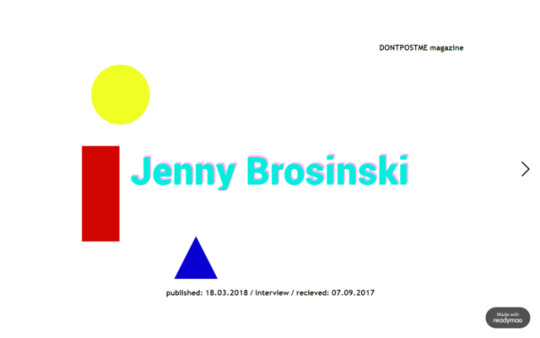
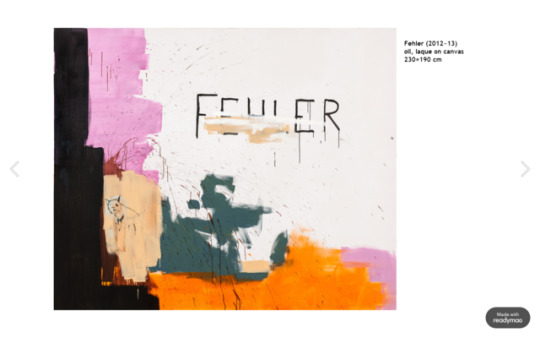
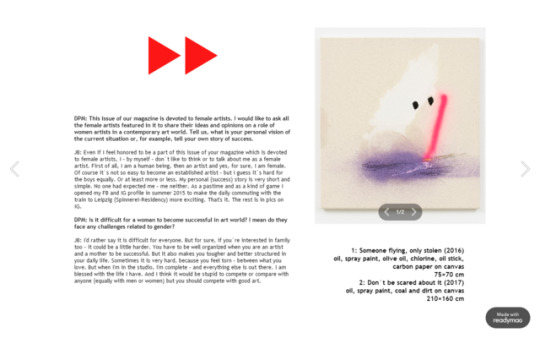
NEW Our new interview with Berlin-based artist Jenny Brosinski: about her career, the story of success and paintings. Read the interview: https://readymag.com/dontpostme/jennybrosinski/
5 notes
·
View notes
Photo
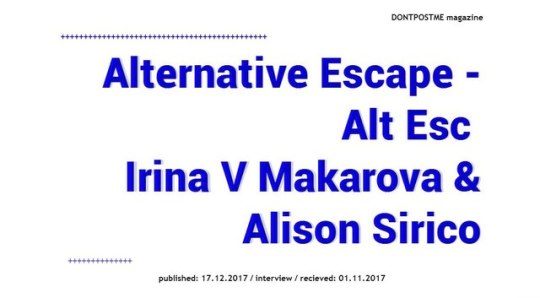
DONTPOSTME magazine / NEW
Interview with New York based curators Irina V Makarova and Alison Sirico: about contemporary art, personal projects and young artists in New York.
Read the interview: https://readymag.com/dontpostme/altesc/
2 notes
·
View notes
Photo

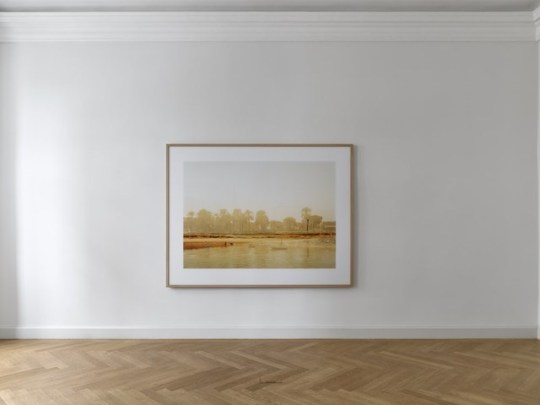
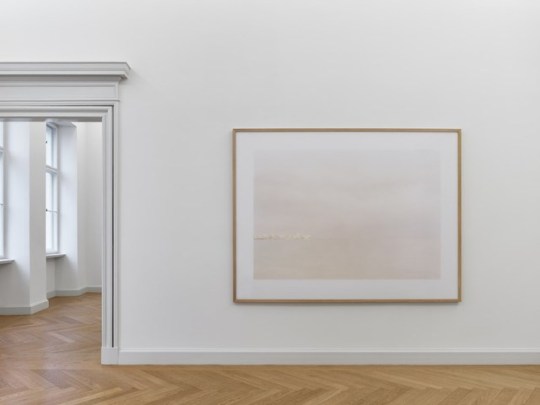
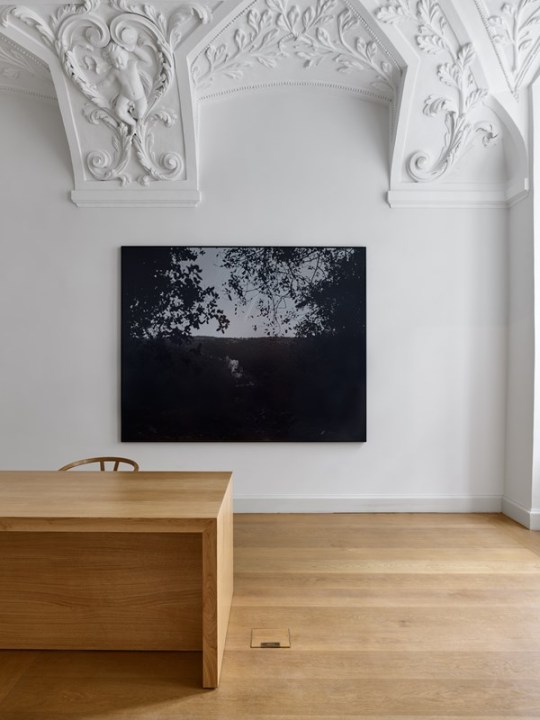
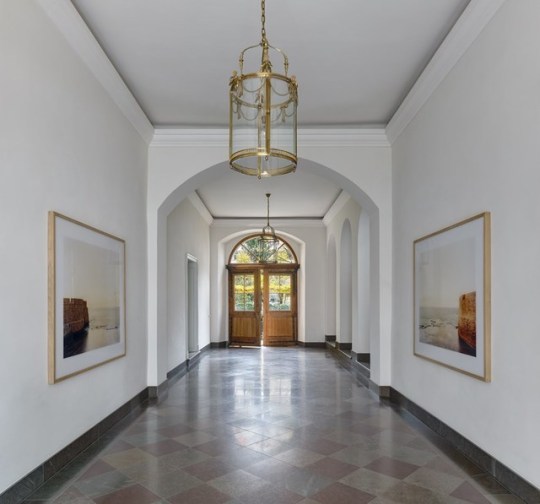
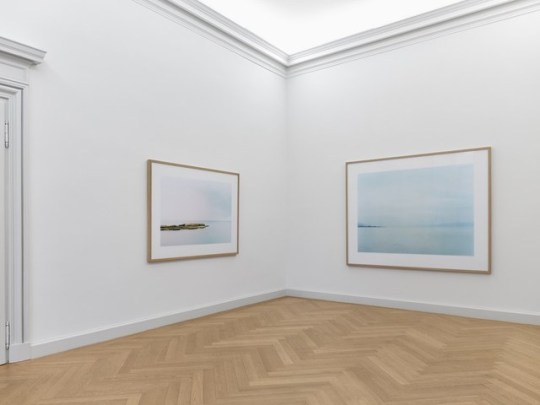
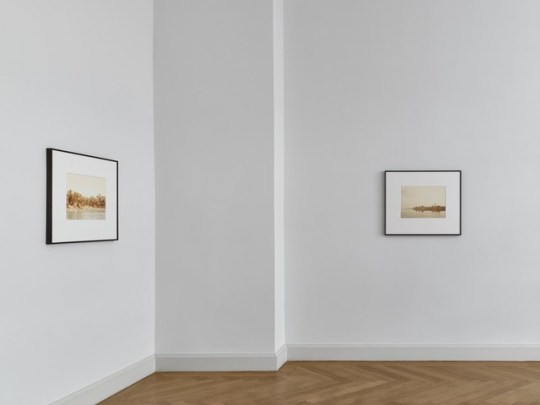
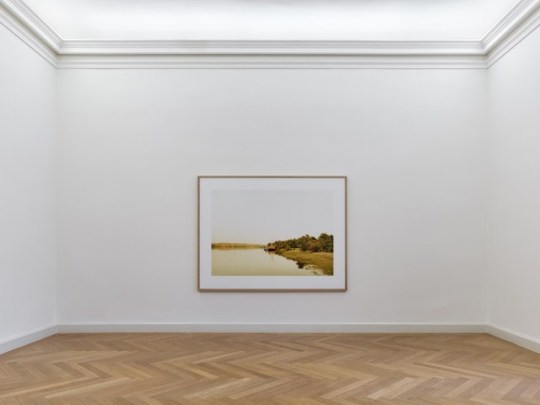
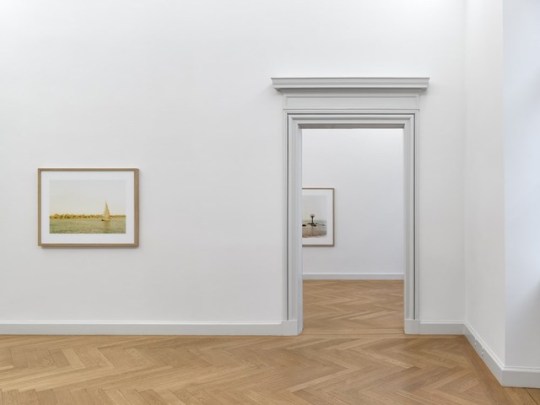
Morgenland at KEWENIG 25 November 2017–27 January 2018, Berlin
Elger Esser
KEWENIG is pleased to present the work group Morgenland by the German artist Elger Esser, who studied in the 1990s under Bernd and Hilla Becher. It marks the third solo exhibition of the artist with the gallery.
Water landscapes and nature are central themes in Elger Esser's complete photographic works. Inspired by romantic painting and photography from the 19th century, Elger Esser chooses predominantly monochrome and muted shades for his large format landscapes. Through the use of traditional photographic and mechanical techniques, he achieves an extraordinary luminosity and depth, as well as a sense of timelessness and the infinite in his images.
The photographs from the series were made between the years 2004 and 2015, in which Elger Esser perambulated amongst other locations, Israel, Egypt and Lebanon. With palm-lined riverbanks between Luxor and Aswan, as well as the Lebanese coast, Esser captured traditional Feluccas and Dahabieh sailing boats with his 8 x 10 camera. The shots produced in Israel from culturally significant locations such as Akko, the Lake of Gennesaret or Jisr az-Zarqa, were likewise photographed analogue. Like many compositions of Esser's, these works are also dominated by water and far horizons emphasising an expansive sky, conveying silence and the sublime. They stand in stark contrast to the poverty and bloody conflicts, which the media conveys on these regions.
The three dimensional addition to this photographic journey is the workgroup One Sky from 2015. Silverplated copper panels printed on both sides, invite the viewer to move around the work. With the help of a second photographer, simultaneous panoramic views of the skies over the Israeli-Lebanese border are formed. The perspectives - one from the Lebanese viewpoint and one from the Israeli side - convey the desire for exchange between the two antagonised states.
A modified form of the exhibition Morgenland was shown earlier this year at Parasol unit foundation for contemporary art (29 March–21 May 2017), the artist's first show in a public institution within the United Kingdom. A catalogue of the series was published in September by Schirmer/Mosel in Munich.
Elger Esser (born 1967 in Stuttgart) lives and works in Dusseldorf. His works have been shown in numerous exhibitions in national and international museums and reside in international collections and museums, including the Solomon R. Guggenheim Museum, New York, the Metropolitan Museum of Art, New York, the Stedelijk Museum, Amsterdam, the Stiftung Museum Kunstpalast, Dusseldorf, the Kunsthaus Zürich, the Fonds national d'art contemporain, Paris, the Centre Pompidou, Paris, the Städtische Galerie im Lenbachhaus, Munich, the Kunstmuseum Stuttgart and the Museum der Moderne Salzburg.
1 note
·
View note
Photo
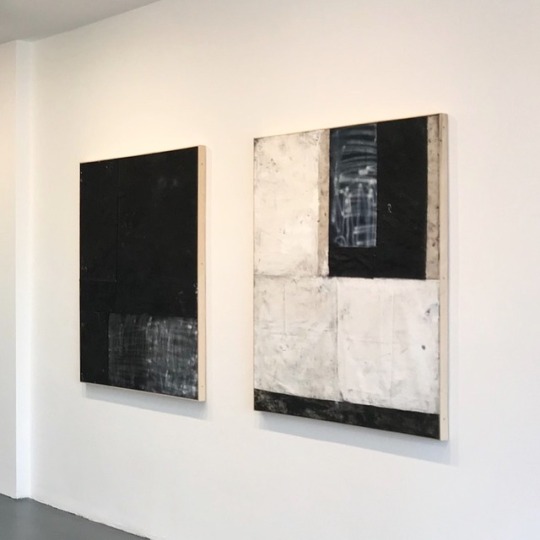
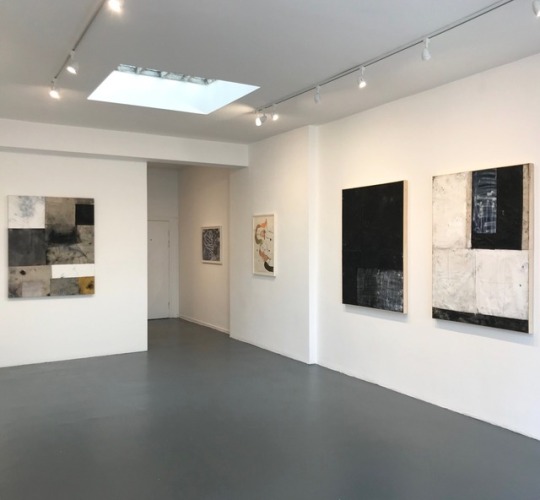
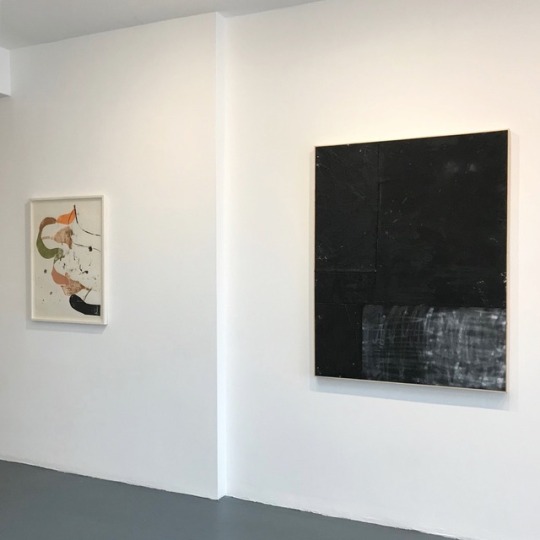

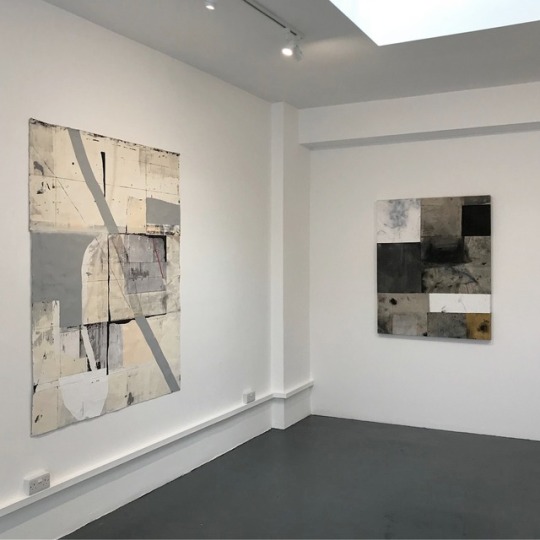
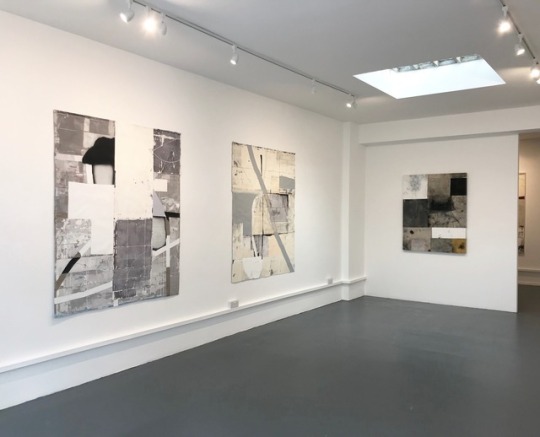
Composing and Caring at Sid Motion Gallery 25 November — 22 December 2017, London
Joseph Grahame, Vincent Hawkins, and Antoine Puisais
Sid Motion Gallery is pleased to present a group exhibition, Composing and Caring, which includes new paintings and works on paper by Joseph Grahame, Vincent Hawkins and Antoine Puisais.
The exhibition title Composing and Caring plays on the Latin derivation of‘curation’ and the multiple meanings of the word. The grouping of these three artists has developed from each of the artists’ interest in process and composition, and the gallery’s continued concern for the importance of curation. Through the exploration of surface and spontaneity, all of these artists employ improvisation, chance and process to create their loose, abstract compositions. The exhibition emphasises how spontaneity becomes crucial to the outcome of these works. Joseph Grahame patches together painted canvas to compile his final works – therefore curating their composition after the paint has been applied to the canvas - allowing dirt and debris onto the surface, encouraging folds and accidental marks to happen and leave their traces on the works. Vincent Hawkins’ monotype relief prints further explore the idea of surface. Using colour, material, form and an extensive library of sketches Hawkins creates abstract works that evolve intuitively. Hawkins emphasises his use of play when making artworks, constantly exploring new ideas and process. Antoine Puisais highlights the importance of how systems operate within his work, but always allows for the accidental and spontaneous. The compositions are guided by an interest in mathematical logic and repetition, yet these systems are often reused and overlaid using layers of plaster, paint and pigment to the point of abstraction. As a result, the canvases are a balance of methodical order and chaos, each painting a playground of possibilities and pitfalls. Artist biographies: Joseph Grahame (b. 1995) is a Leeds-based painter who is currently completing his MA in Fine Art at The University of Leeds. Grahame has been exhibiting his work since 2013, and has most recently shown with Rendezvous Artspace at Kvit Galleri in Copenhagen. With great excitement around this young artist, numerous publications and online platforms have featured Grahame’s work this year.
Vincent Hawkins (b. 1959) has exhibited extensively in Britain and internationally with solo shows in Chicago and Paris in recent years. Hawkins’ work has been included in group shows in the USA, Italy, France and the UK. He was shortlisted for the Jerwood Drawing Prize (2006), was a finalist in the John Moores Painting Prize (2012) and a Prize Winner in the 2006 John Moore’s 24. Hawkins also exhibited work in the Summer Exhibition at The Royal Academy of Arts, London in 2007 and 2008. Hawkins was included in the inaugural exhibition at Sid Motion Gallery in 2016. Antoine Puisais (b. 1975) is a self-taught French painter living and working in Cannes. Since the late 90’s, Puisais has exhibited in solo exhibitions in Turin, London, New York and Paris. His work has been included in group exhibitions and Art Fairs internationally, most recent presentations have been in New York, Miami, Turin and Copenhagen.
0 notes
Photo

DONTPOSTME magazine / NEW Interview with Italian artist Francesca Longhini: she told us about her career, a role of female art in the world and her personal attitude to Russian avant-garde. Read the interview: https://readymag.com/dontpostme/longhinidontpostme/
0 notes
Photo
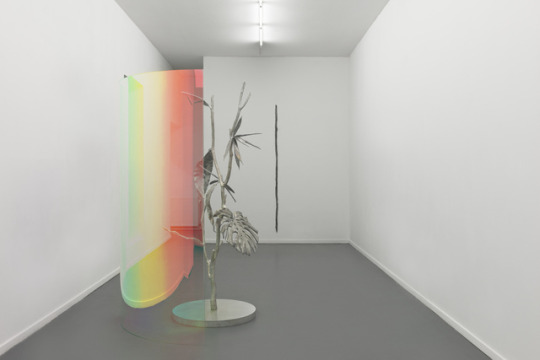
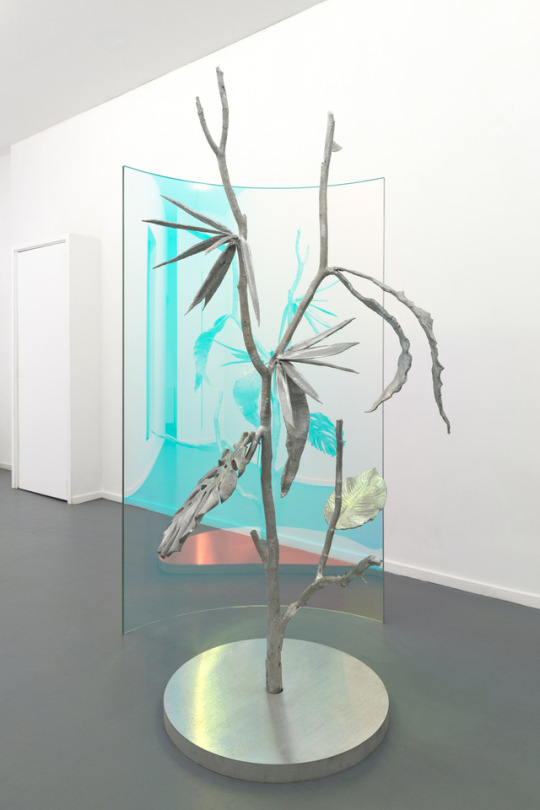
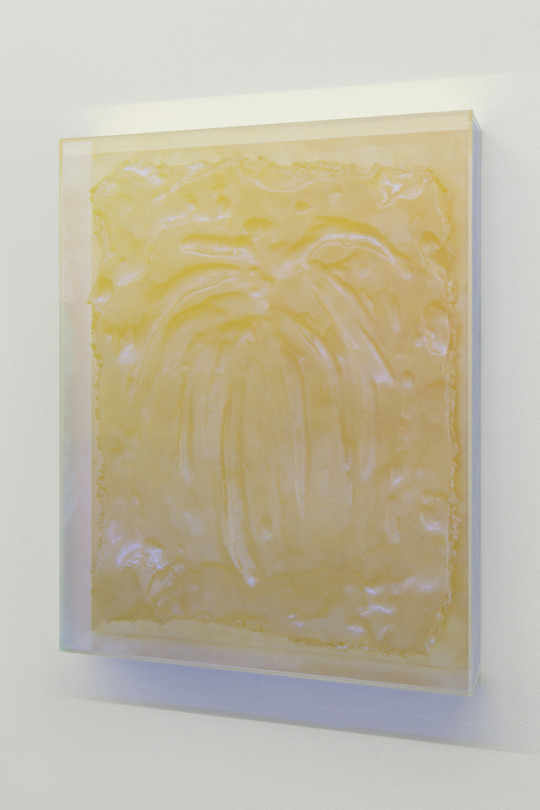

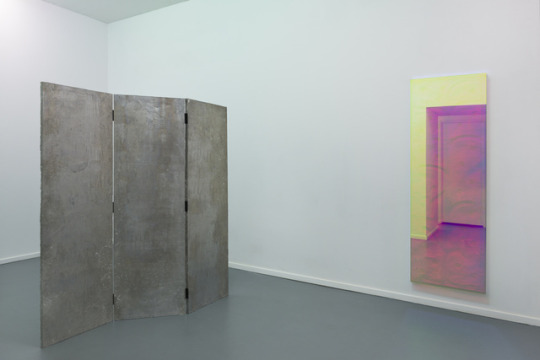
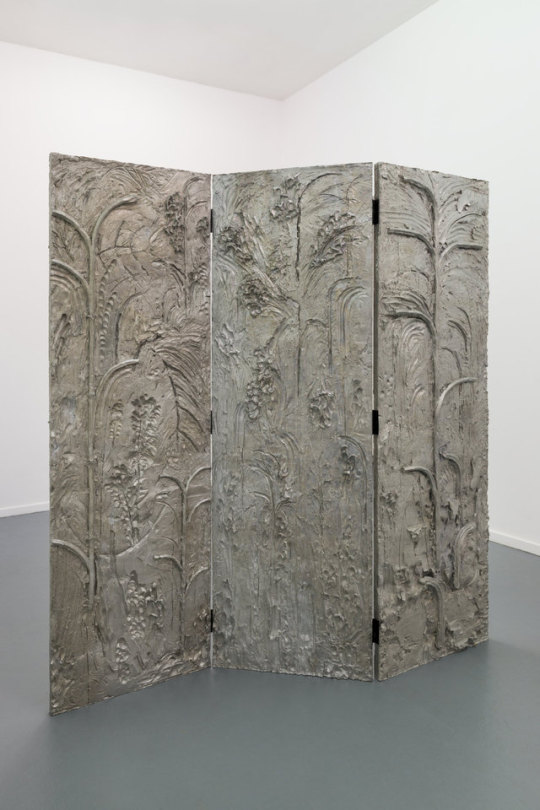
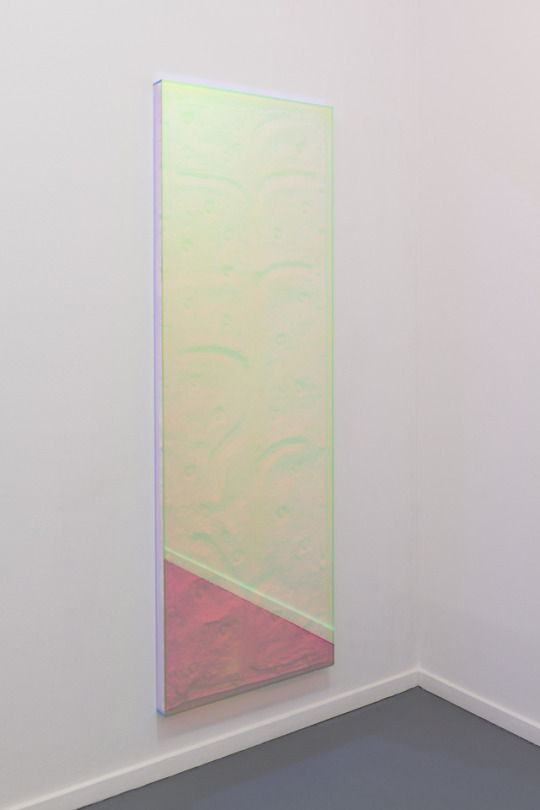
Where do we come from? Where are we going? at CINNNAMON 29 October — 09 December 2017, Rotterdam, The Netherlands
Filip Vervaet
CINNNAMON is pleased to present the exhibition Where do we come from? Where are we going? by the Belgian artist Filip Vervaet. This is the first show by the artist at the gallery. Over the years, Vervaet has developed a visual language in which he combines elements into a personal universe. Art historical references, allusions to science fiction, and psychedelic influences come together in sculptures that arise in the twilight zone between past and future, while testing the boundaries of the medium. The tension between tangible and supernatural, natural and artificial, is therefore always present. That’s no different at his current exhibition at Cinnnamon. The title of the expo refers to the last painting by Paul Gauguin (D’où venons-nous? / Que sommes-nous? / Où allons-nous?) with which the artist raised a number of existential questions. With his work Vervaet presents a number of similar questions about the contrast between past and present, life and death, nature and culture. Like Gauguin, he works around an exotic representation of nature. At the heart of the first room is Paradisio #5, an artificial plant for which the artist has taken elements of various plants from the the winter garden in the Antwerp Zoo and merged them into a new species. The sculpture refers to the makeability of nature, a recurring theme in Vervaets practice. The ‘plant’ is embraced by a curved dichroic glass sheet that changes color according to the viewer’s position. The dispositive not only causes confusion between the inside and outside, but also changes the viewer’s perspective, which makes the room different. The phantasmagorical representation of nature continues with Dubai revisited, based on the stereotypical image of paradise: the palm tree. The work is made of aluminum and is behind dichroic glass that changes color according to the perspective of the spectator. It is the fourth work of a series based on the same drawing. For this series, the artist each time uses a template to make a new work. This way he is increasingly revealing the process of his work and embracing the notion of coincidence. For the third work in the first space, Trace, he works (as the title suggests) around the notion of traces, in the form of a line that he seems to have drawn in the wall as far as he could reach. At the center of the second room is Silver Screen, a three-dimensional aluminum screen shutter that is rear-facing. If you walk around work, you’ll see a bass relief of imaginative, exotic plants. The traces of the fingers of the artist are still clearly visible. In this way, the work refers to both the exotic plant world of Paradisio, and to the direct act of tracing found in Trace. In the second room he also presents the intermediate steps of the making process as autonomous work. This time his point of departure is a fragment from Silver Screen, from which he uses the negative of the template for new work. Sarcophagus shows the negative of a support template behind dichroic glass. In Topology of a Dream, to sum it up, a support template seems to have transformed into a game board, or the beginning of a network structure, the wooden and aluminum pins to be read as nodes. Sam Steverlynck, October 2017 Translation: PD Filip Vervaet (°1977, Mechelen, Belgium, lives and works in Antwerp) studied at Sint-Lucas, Brussels and the HISK in Ghent. Solo/duo exhibitions include: Hollow Earth Sculpture Show, Annie Gentils Gallery, Antwerp, 2014 / Horror Vacui, Filip Vervaet and Renato Nicolodi, 38CC, Delft, 2015 / Ignorance is strength, A collaboration with Sharon Van Overmeiren, curated by Damien & The Love Guru, Hunting at Collecting, Brussels, 2014.
0 notes
Photo
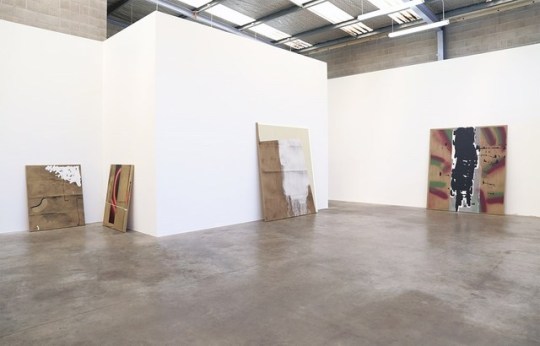
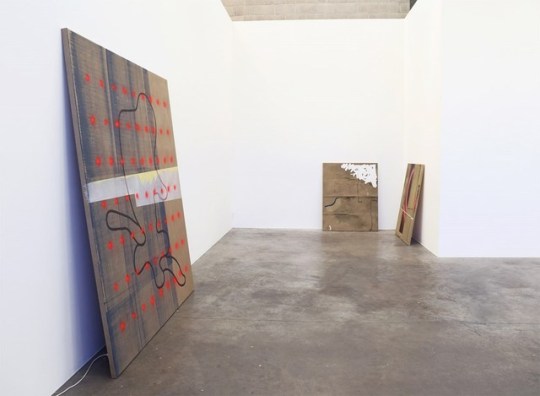
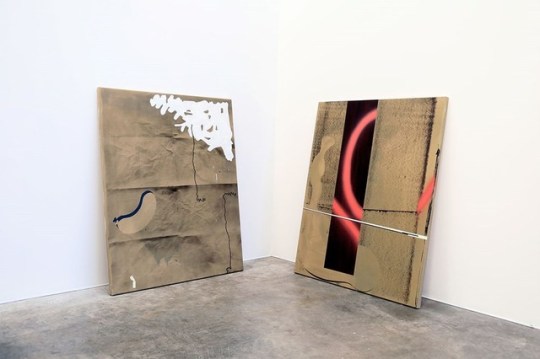
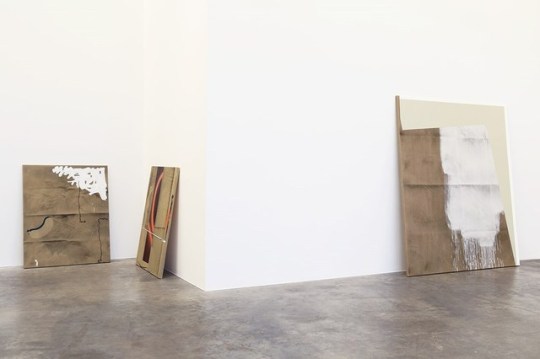
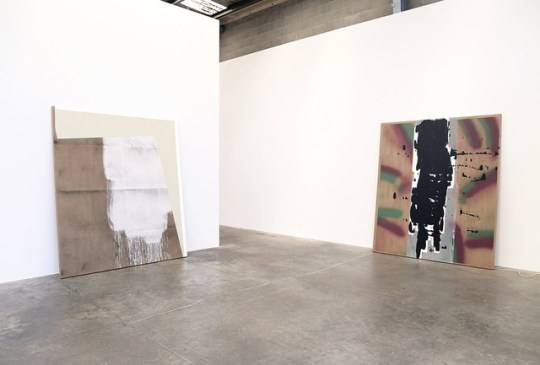
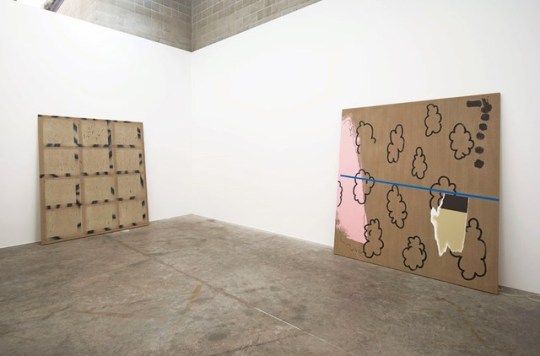
I see through me at Jonathan Smart Gallery 21 October — 26 November 2017, Christchurch, New Zealand Tjalling de Vries Tjalling de Vries is ambitious for painting – ambitious for the range and scale of mark-making he might bring to bear across a canvas, and ambitious too, that painting and sound might come together. Here, intermittent industrial noise played quietly from stretcher bars behind three of the paintings co-habits with postmodern mark-making, and they seem to rub along.
But it is the act of painting that is pre-eminent. One of the pleasures of this show is that de Vries reminds us just how broadly based an activity mark-making can be. Yet the dictates of composition, the measured needs of each painting, still determine the range of technique or the technical virtuosity on show. For de Vries, painting is this delicate dance.
Agitation Sticker has a ground of slate blue pulled by squeegee through old silkscreens; a light lozenge of transparency with masked, brushed edge of yellow angled across its middle; a controlled sinuous line meandering throughout; and a casually sprayed grid of red dots on top. Seems like plenty on a canvas spanning 2200 x 1900mm. But everything is in place in the shallow space of this picture plane. The effect is restrained, open and elegant.
The title work I see through me is similar in pitch, though even more playful. The painting’s ground is angle sprayed. Like most of the works in this show, it has been made off the stretcher and then re-stretched. This sprayed ground gives the painting a folded topographical look, a high viewpoint as if we were scoping something both intimate and grand. White paint has been sponged on top right, masking tape replicated lower left (an old de Vries leitmotif), and two black lines pitch-perfect in calligraphic weight converse with one another in between. Then finally, there is the sausage-like balloon. Its form feels cut out or in to the painting, yet it casts a shadow. Guess that’s why the painting is called I see through me.
Stolen Folder has a beautiful simplicity. Its major angular feature pushes from the bottom of the painting upwards off the floor (all these works lean from the floor to the wall), but that presence is met with white paint pulled and allowed to dribble back to the floor. Sounds insignificant. But upon this lovely tawny linen it looks soft and smashing. There are two creamy edges, an ochre ground and two small, brushed idiosyncratic bars that also enable this painting. Still, its confidence is never overstated.
This exhibition is seven works strong. It is also graceful, poised and mighty arresting. JS
0 notes
Photo
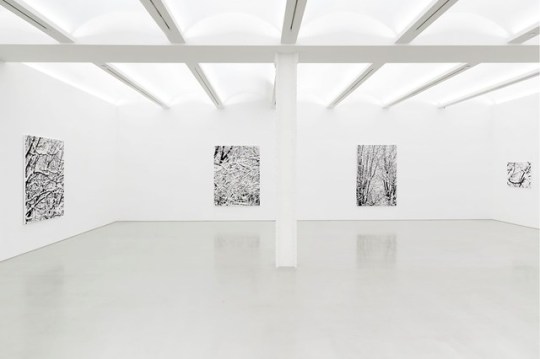
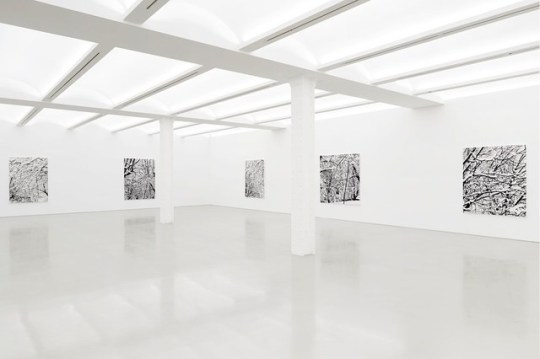
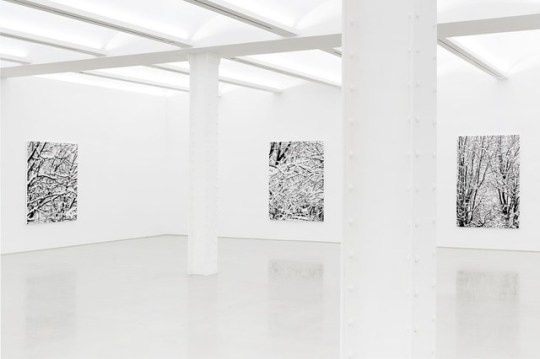
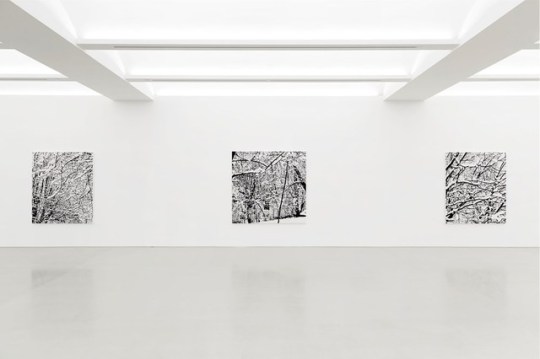
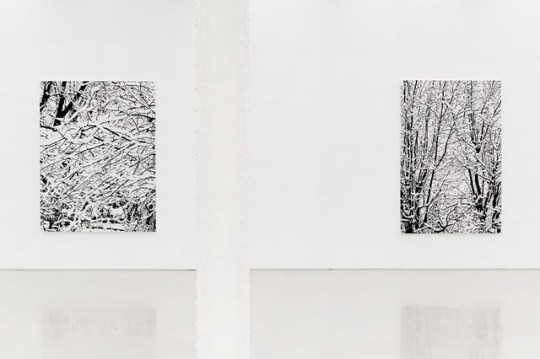
Snow Forest at Galerie Perrotin 5 November–23 December 2017, New York
Farhad Moshiri
Perrotin New York is pleased to present “Snow Forest”, the fifth solo exhibition at the gallery by Farhad Moshiri. The exhibition is coinciding with “Go West”, the first retrospective in the US of Farhad Moshiri, currently held at The Andy Warhol Museum in Pittsburg through January 14, 2018.
Fiction and simulacrum appear at the core of Farhad Moshiri’s multi-faceted practice of painting and installation. It most probably all started in Shiraz, where Moshiri grew up, a city nestled in the southern desert of Iran and famously the birthplace of the great Persian poets Hafez and Saadi. Moshiri’s father owned a few cinemas in Shiraz, and the artist spent his childhood watching classic American films, horror movies or spaghetti westerns, all dubbed in Farsi. From Dracula to Laurel and Hardy, from Charlie Chaplin to John Wayne, mythical figures of the Americana accompanied his Iranian upbringing. Years later, in the aftermath of the Iranian Revolution, Moshiri and his family relocated to the suburbs of Los Angeles, a place where fiction and representation does in fact precede reality. During his formative years studying at CalArts in the 1980s, he encountered conceptualists John Mandel and John Baldessari, a pioneer of accumulation and use of language, and electronic musician and synthetizer inventor John Buchla. The art produced in the United States in the next decade would bring Pop, minimalism and conceptual practices together with American consumerism, and artists such as Jeff Koons or Haim Steinbachwould express these influences in their work. By 1991, Farhad Moshiri had moved back to Iran, and began developing a practice evoking Iran’s traditions and isolationism, while simultaneously addressing the powerful presence and attraction of Western pop culture and this of a globalized consumerism.
On the one hand, Farhad Moshiri expresses, throughout his work, a visual fascination for a Pop imagery inherited from movies and popular culture — cartoons, films, ads, children’s books, cowboys and Indians—, and frequently utilizes sentences taken from classical poetry and pop songs. On the other hand, he seems to merge this influence with a technical appropriation of traditional Iranian modus operandi such as Persian carpets, tapestries with traditional motifs taken from Persian miniatures or embroidery of traditional adjad calligraphy, an ancient Arabic clerical code associating letters and numbers. Undeniably Moshiri plays with a range of clichés and stereotypes taken from both cultures. In witty and sometimes cruel détournements, he employs lyrics from American songs, famous slogans or sentences taken from Iranian popular love songs and soap operas. In this sense, Moshiri seems to take over in order to better deconstruct the clichés both inherent to Hollywood and to what Iranians have coined as Gol-o-Bolbol—literally “flower and the nightingale”—i.e. two commonplaces of Iranian literature and visual culture, and echoing a stereotyped and saccharine Persian imagery.
Farhad Moshiri’s latest series of works, presented at Perrotin New York and entitled Snow Forest (2017), are inspired by photographs of snow trees taken during the winter in Iran. Hand-embroidered with pearls beads, these new compositions seem to refer to calligraphy, as the black branches traverse the canvas like a quill would mark the paper. This writing form is an abstract one though, and the viewer may feel lost in its absence of meaning, looking at a surrounding ensemble of branches and snow in the middle of the forest. It also evokes a melancholic and abstract visual realm, suggesting a rather minimalist sense of poetry than the shiny and shimmering imagery that usually dominates his practice. These black and white canvases also bring to mind Abbas Kiarostami’s series of winter photographs, “Snow Series”, which the renowned Iranian filmmaker started to produce right after the Iranian Revolution, as he wasn’t allowed to make films in his native country anymore. Similarly, Farhad Moshiri photographed winter landscapes in Iran years ago, recently found them in old boxes and decided to use, for the first time, the photographic medium as the point of departure of a new series. In addition, this body of works seems to express a meditative approach to the essence of things and to nature, as well as a bucolic reflexion on their existence, inducing the presence of an inaccessible place or a lost paradise where the artist might not be able to return.
By evoking images and cultural artifacts that suggest both American and Iranian cultures rather than pointing out the cultural dichotomy between East and West or relating the experience of an individual lost between two worlds, Farhad Moshiri’s practice seems, on the contrary, to convey a certain idea of porosity of cultures, at a moment in history where the weight of borders has become more and more significant. In times of restriction of access to specific population through the institution of a Muslim ban including Iran in the United States, Farhad Moshiri’s work appears as a necessary proof that cultural borders remain open while physical ones may close. He interrogates our definition of cultural identity, and evokes the construction of a memoryscape, or a plural memory made of exile and immigration, of aesthetic exchanges and visual acculturation. Martha Kirszenbaum
October 2017
0 notes
Photo
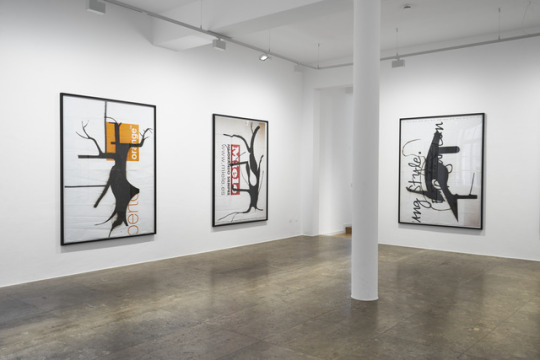
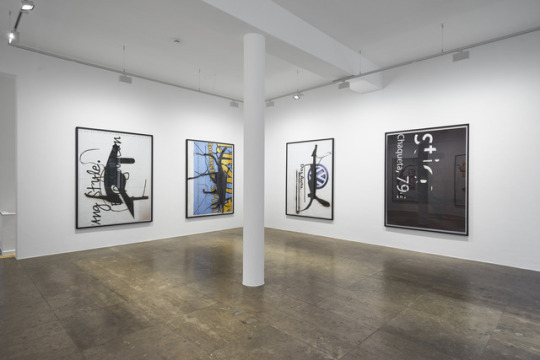
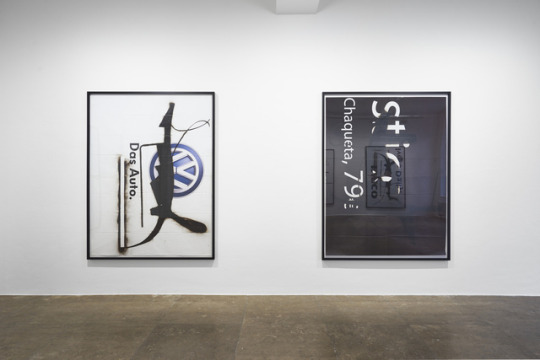
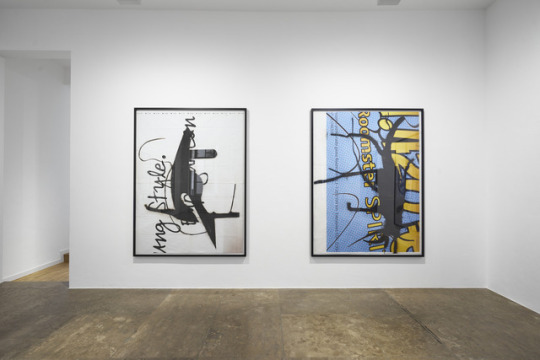
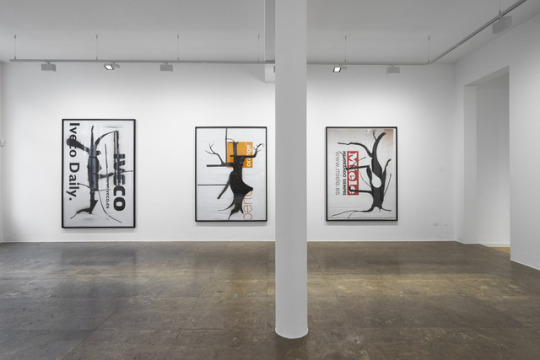
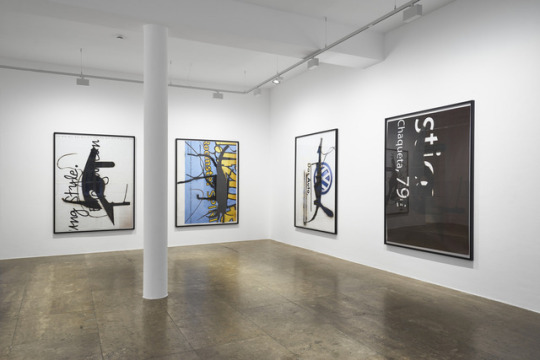
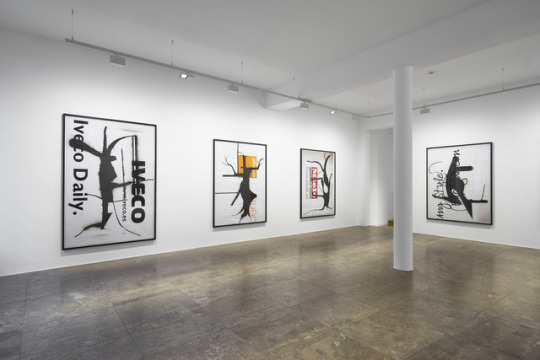
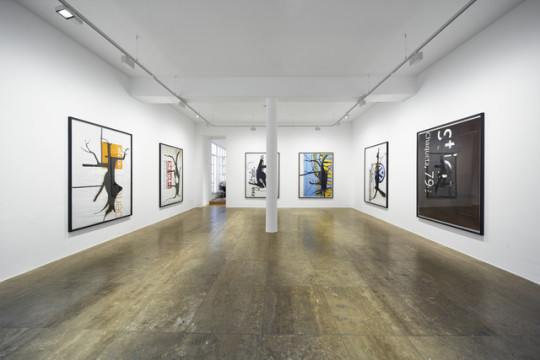

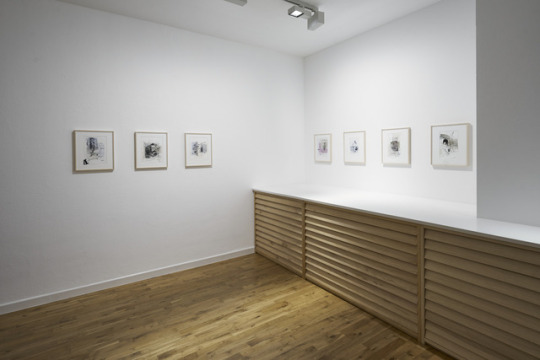
Solo exhibition at Jahn und Jahn 07 October – 18 November 2017, Munich
Albert Oehlen
Jahn und Jahn are delighted to announce Albert Oehlen’s first solo exhibition. For over 30 years, through his continual questioning of what painting was, is today and could be tomorrow, he has been one of the most influential international painters. Taking huge risks, he crosses all boundaries of aesthetic convention – ‘good taste’, representational readability, autonomous painterly development – and follows a “deep seated” desire for freedom: “I have always been forbidden from using the word ‘freedom’, but I use it anyway. It’s a vaguely romantic word, old-fashioned, but still a beautiful word.”
For Munich, Oehlen has created seven monumental paper works as well as compiling a sophisticated selection of current collages and drawings. He deliberately keeps pace with the times and his images manage to make “a noise like the contemporary world”, as Rainald Goetz noted. And so we see fragments from advertisements harshly cut out; fragments of the “Image” of a globalised world of goods. Logos that shout luridly, seduce or touchingly strive to be hip, slogans and trigger words which act as uninhibited start-up fantasies (“Roomster”) or nostalgic re-branding (Miele) all of which want to be contemporary (“Style”), including mobility (“IVECO”), telecommunication (“Orange”) and reliably solid scandals (“VW”). Ideologies distributed on a daily basis that just as quickly disappear, images that ultimately no longer know “comfort” or “dreams”, or are simply just “ultra-blunt”.
Albert Oehlen, however, thinks in opposites, always. How much, in the end, do you want to recognise in that which is superficially “there as representational”? Or “keep away from yourself”? The visual volume of advertising messages is quietly and, and at first glance, inconspicuously removed by layers of painting and layers of drawing, their immaculate smoothness is broken by cracks, notches and blurring. Oehlen is once again dealing with “hand-made painting”. A form of painting that nonetheless explicitly knows its opposite and, as such, playfully neutralises it.
Contemporary, but… Therein lies their ‘contemporaneity’, which today almost sounds like melancholy. Perhaps a little bit of comfort and gentle, complex dreams after all? Hopefully. Thus the works can be “simultaneously abstract and representational” and, in spite of all criticism and cynical harshness, extend beyond the mere present, like the „trees“ which also unfold upon them. If “you follow this minimal rule”, there really are trees: “If you say there is something thicker in the middle which gets thinner on the outside, and strokes that move away from it, it is a tree. And if you look at one of the branches, you can see that it has its own ideas. In this way I have fulfilled the representational but can likewise satisfy the ‘task of the abstract artist’ and allow for the most unusual combination of lines to be found.” It is not the digitalised world of goods that “helps [him] with painting” but, on the contrary, it might be that Albert Oehlen, painting precisely with these outlandish lines, offers impressive ‘points of assistance’ in the understanding of the images of our present.
- Christian Malycha
Albert Oehlen was born in 1954 in Krefeld, Germany. He graduated in 1981 from Hochschule für Bildende Künste, Hamburg. From 2000 to 2009, he worked as a professor in painting at Kunstakademie, Düsseldorf. He lives in Switzerland. Since 1979 he has had numerous solo exhibitions and his work can be found in many public collections including: Boymans van Beuningen, Rotterdam. Carré d’Art, Nîmes. Centro de Arte Reina Sofia, Madrid. Cleveland Museum of Art, Cleveland. De Appel, Amsterdam. Deichtorhallen, Hamburg. Galleria d’Arte Moderna, Bologna. Guggenheim Bilbao. ICA Institute of Contemporary Art, London. Kestnergesellschaft, Hannover. Kunsthalle Basel. Kunsthalle Zürich. Kunstmuseum Bonn. Kunstsammlung Nordrhein Westfalen, Düsseldorf. Kunstverein Reutlingen. LACMA Los Angeles County Museum of Art, Los Angeles. Musée d’Art Moderne de la Ville, Paris. Museo Nacional de Bellas Artes, Havanna. Museum Brandhorst, München. Museum Folkwang, Essen. Museum Ludwig, Köln. Museum Wiesbaden. Neue Galerie Gladbeck. New Museum, New York. Renaissance Society, Chicago. Städel, Frankfurt am Main. Whitechapel Gallery, London.
0 notes
Photo
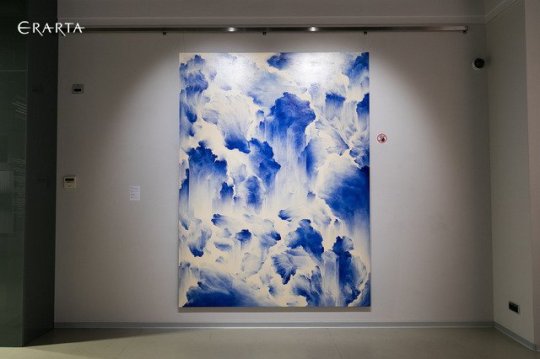
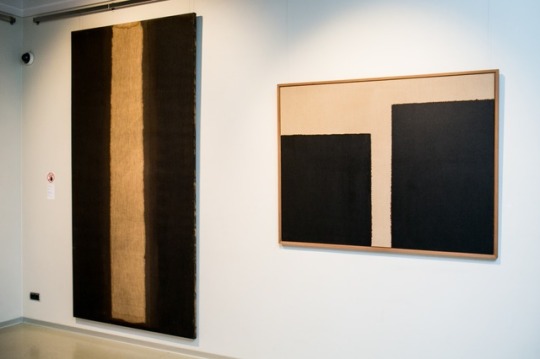
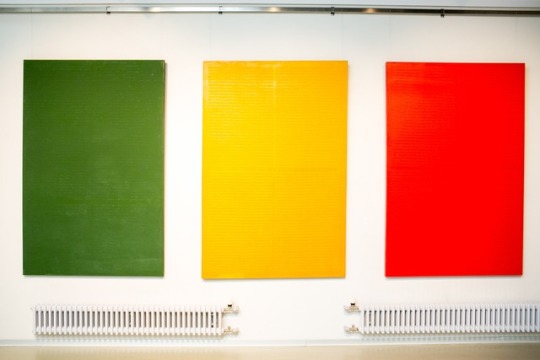
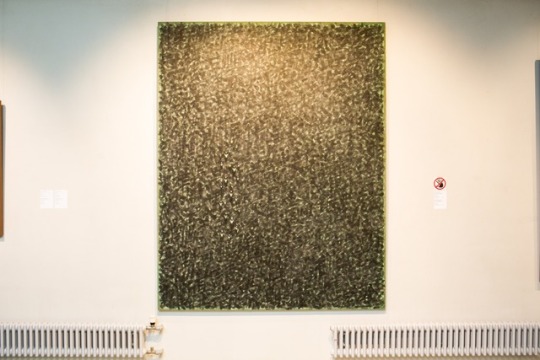
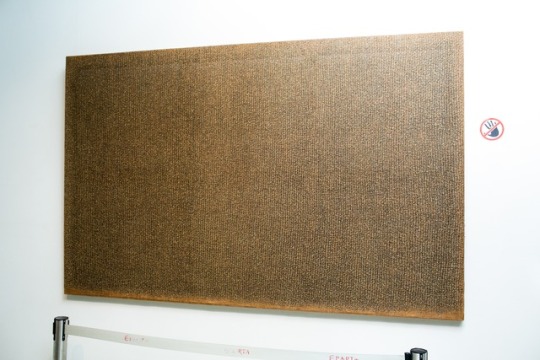
The Ascetic Path: Korean Dansaekhwa at Erarta Museum 12 October — 19 November 2017, St. Petersburg
In the early 1970s, contemporary Korean artists were undergoing a period of serious experimentation. Going beyond the traditional questions of “What do I paint and how”, they tirelessly asked themselves, “Why must I paint?”, “What is painting?”, and “What is the spiritual essence of Korea?” It was in this process of soul-searching that the truest form of Korean contemporary art was born: Dansaekhwa. This revolutionary new form was highly influenced by minimalism — where artistic techniques and dramatizations are minimized, focusing only on the essence of the object —and conceptual art, which emphasizes the immaterial. In traditional art forms, the most important consideration is the end product, the “artwork” produced, no matter the process or motivation of rendering such art. Conceptual art rejects such traditional notions, seeing the idea or process of creation as art in and of itself, rather than focusing on the resulting piece. In addition to this creative and non-material attitude of conceptual art, another influence on Dansaekhwa was the Eastern spiritual legacy. One interesting aspect of Eastern art is that it was traditionally used as a means for self-cultivation. Ancient scholars of the East sought to develop themselves through painting or calligraphy, similar to disciplining oneself through martial arts or meditation. For Korean Dansaekhwa artists, painting was at once a spiritual, conceptual experiment and form of self-cultivation, going beyond the simple artistic act of turning materials into artworks. Dansaekhwa is an artistic style unique to Korea, born out of an amalgamation of the material aspect of minimalism, the psychological aspect of conceptual art, and the self-cultivation culture of the East. It was more than an artistic technique, it was a philosophy. The works introduced at the Ascetic Path: Korean DANSAEKHWA showcase the introspection and practices of the pioneers of Korean contemporary art, as they sought to establish a new art form based on the Eastern and national archetypes.
4 notes
·
View notes
Photo
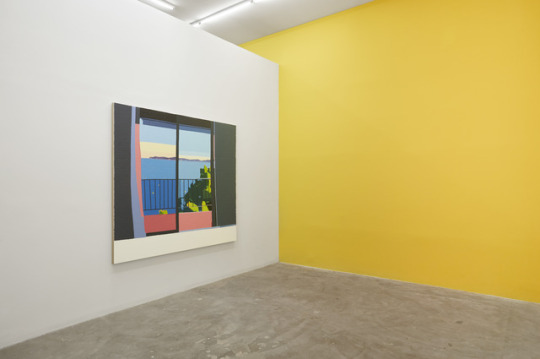
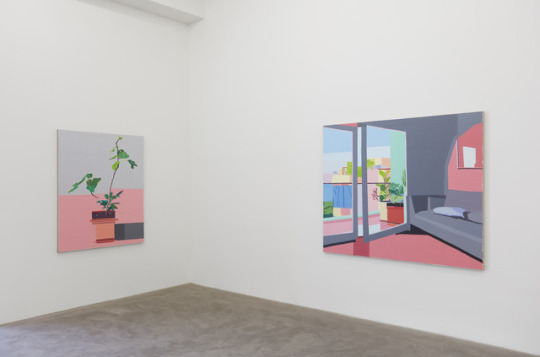

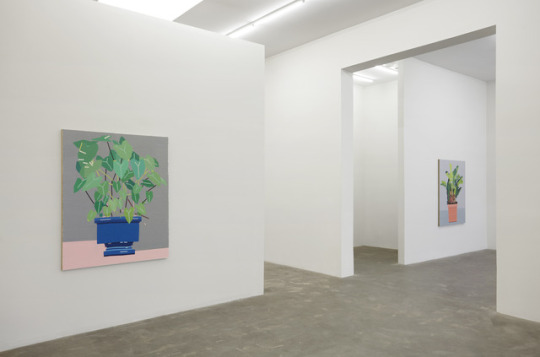
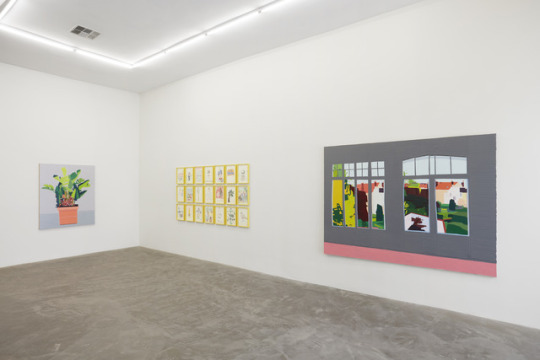
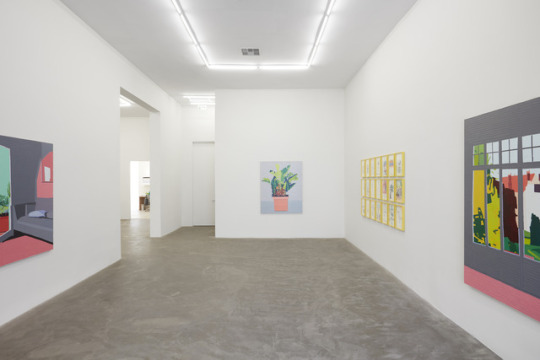


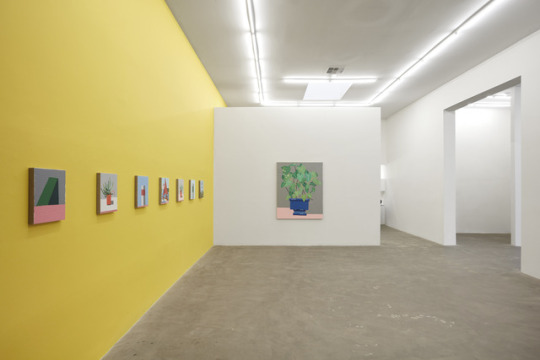
Barbarian In The Garden at Praz-Delavallade 04 November — 22 December 2017, Los Angeles
Guy Yanai
Praz-Delavallade Los Angeles is pleased to present its first solo exhibition by Guy Yanai, opening on November 4 and on view through December 22, 2017. Yanai’s practice is fueled by fables, stories and hymns—each painting a reflection of the pragmatic side of our life. In his isolated moments one may find a smiling child, a big splash, lonely banana, bristling cactus, modernist lamp, a singing bird or a tiny boat gliding on placid waters below a clear sky. These individual vignettes bleed into one another and could continue forever, suspended in time. Many of Yanai’s subjects are intentionally recognizable and commonplace, rendered into a pixelated appearance.
For his exhibition Barbarian In The Garden, Yanai presents a series of paintings and drawings that capture his alienation to memory and places, flattened and made shallow through solid blocks of color that create the appearance of cut-outs or collage. He creates a mise en scène by the activations of separate vignettes from distant memories such as a painting of George Washington on a horse—drawn from a recollection of when he made a similar drawing for his brother around the age of 7—juxtaposed with paintings of plant life, unoccupied interiors such as a view from his apartment in Tel-Aviv or a hotel in Rayol-Canadel-sur-Mer.
Influenced by impressionist masters such as Matisse and Cézanne, as well as contemporary figures like Tal R and David Hockney, Yanai’s personal style mixes the aesthetics of his transcontinental childhood spent between Haifa, Israel and the suburbs of Boston, where he first drew inspiration from scenes of everyday life. In his paintings, the banal is reduced to geometric segments where he then abandons references to the tangible world in favor of a visual experience that is more akin to digital imagery – such as a painting of Palermo as seen through Google Street View.
Yanai shares in a similar dialogue with his contemporaries through the practice of translating visceral and visual experiences that are inherently embedded in the digital. Though many artists share a comparable approach in portraying the painted subject, Yanai works within a different cognitive space; He paints with fine and calculated brushstrokes in an existential manner, with every mark laid down through a detailed application, keeping layering to a minimum. His work can be seen in line with that of Robert Ryman or Philip Guston in his delicate handling of paint, where every stroke is critical to the work’s success. The vivid brightness of his palette reflects the warmth and light of his native land, while his interiors are placeless puzzles and his plants are almost always alone. The more time spent with Yanai’s painting, the more it encourages an investigation into the perceptive space of the canvas, a place where objects, scenery and nature are conjured, sustained and gently teased away.
Guy Yanai (b. 1977, Haifa IL) attended Parsons School of Design and the New York Studio School before receiving his BFA from Hampshire College, Amherst MA. He has been included in numerous exhibitions nationally and internationally at institutions and museums including The Painting Center, New York City US; the Velan Center for Contemporary Art, Turin IT; the Ashdod Museum of Art, Ashdod IL; and the Haifa Museum of Art, Haifa IL.
0 notes
Photo
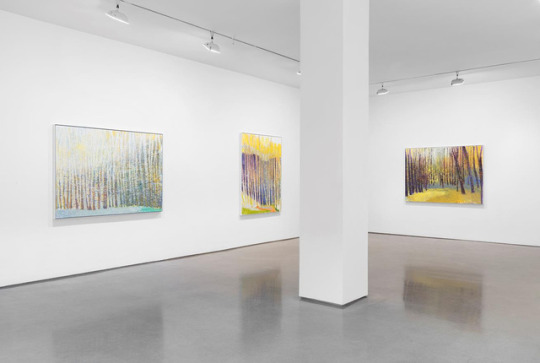
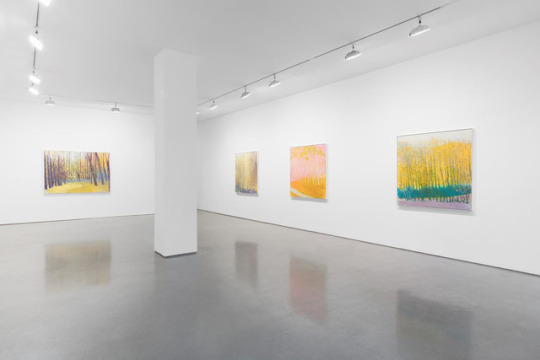
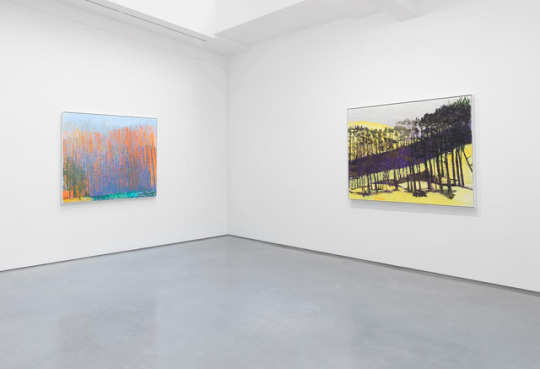
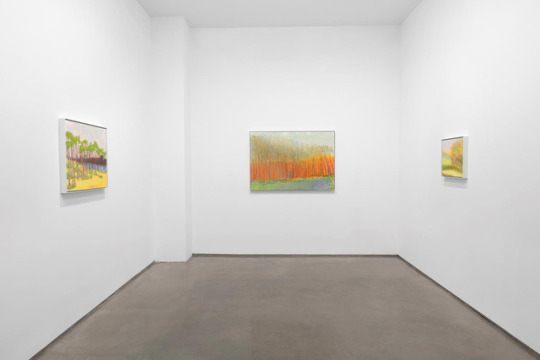
Solo exhibition at Ameringer | McEnery | Yohe 16 November — 23 December 2017, New York
Wolf Kahn Ameringer | McEnery | Yohe is delighted to celebrate Wolf Kahn—who turned 90 this year—with an exhibition of recent paintings. The exhibition will open 16 November and remain on view through 23 December 2017. A public reception for the artist will be held on 16 November from 6:00 to 8:00 PM. The exhibition is accompanied by a fully illustrated catalogue with an essay by John Yau. This ambitious body of work represents the past two years of Wolf Kahn’s daily studio practice, and demonstrates his continued exploration of the relationships of color and form. With quick, flickering brushstrokes and delineated bands of vivid hues, Kahn creates landscapes that are simultaneously descriptive and abstract. As John Yau notes, these paintings serve as a means to “explore color relationships that range from moody, dark, subtly shifting tonalities to jarring collisions of saturated intensities.” Kahn’s work remains rooted in direct observation, with each season producing a new challenge. His recent paintings highlight his finely tuned ability to capture subtle differences in light and shadow: some canvases are suffused with an intense radiance, while others contain darker, more sharply contrasted tones. After many decades, Kahn continues to make color his primary subject, in all of its shades and permutations. Born in Stuttgart, Germany, in 1927, Wolf Kahn immigrated to the United States by way of England in 1940. In 1945, he graduated from the High School of Music & Art in New York, after which he spent time in the Navy. Under the GI Bill, he studied with renowned teacher and Abstract Expressionist painter Hans Hofmann, later becoming Hofmann’s studio assistant. In 1950, he enrolled in the University of Chicago, and graduated in 1951 with a Bachelor of Arts degree. Having completed his degree in only one year, Kahn was determined to become a professional artist. He and other former Hofmann students established the Hansa Gallery, a cooperative gallery where Kahn had his first solo exhibition. In 1956, he joined the Grace Borgenicht Gallery, where he exhibited regularly until 1995. Kahn has received a Fulbright Scholarship, a John Simon Guggenheim Fellowship, an Award in Art from the Academy of Arts and Letters, and a Medal of Arts from the U.S. State Department. Traveling extensively, he has painted landscapes in Egypt, Greece, Hawaii, Italy, Kenya, Maine, Mexico, and New Mexico. He spends his summers and autumns in Vermont on a hillside farm, which he and his wife, the painter Emily Mason, have owned since 1968. The unique blend of Realism and formal discipline of Color Field painting sets the work of Wolf Kahn apart. Kahn is an artist who embodies a synthesis of artistic traits—the modern abstract training of Hans Hofmann, the palette of Matisse, Rothko’s sweeping bands of color, the atmospheric qualities of American Impressionism. The fusion of color, spontaneity and representation has produced a rich and expressive body of work. Wolf Kahn regularly exhibits at galleries and museums across North America. His work may be found in the collections of The Metropolitan Museum of Art, New York, NY; the Whitney Museum of American Art, New York, NY; The Museum of Modern Art, New York, NY; the Museum of Fine Arts, Boston, MA; the Hirshhorn Museum and the National Museum of American Art, Washington, D.C.; and the Los Angeles County Museum of Art, Los Angeles, CA.
0 notes
Photo
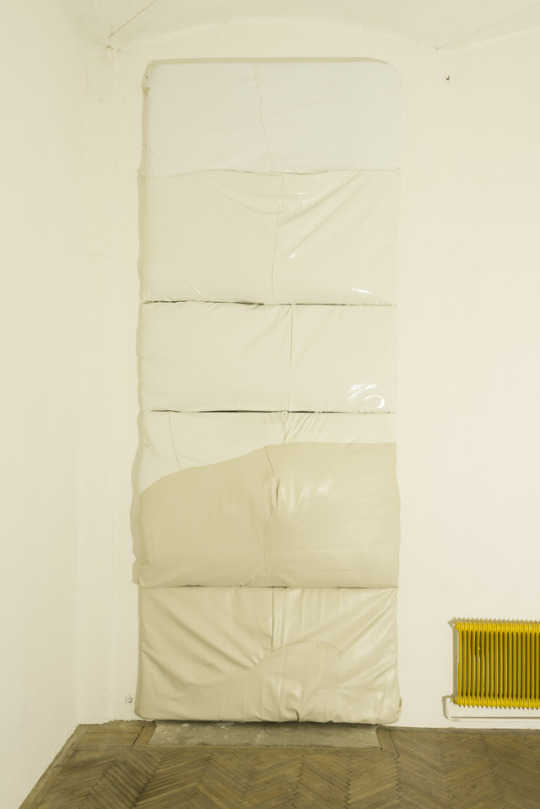
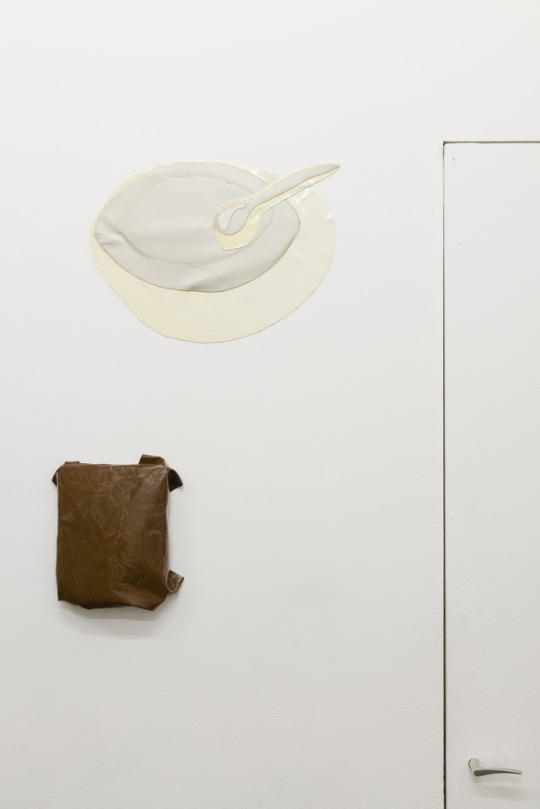

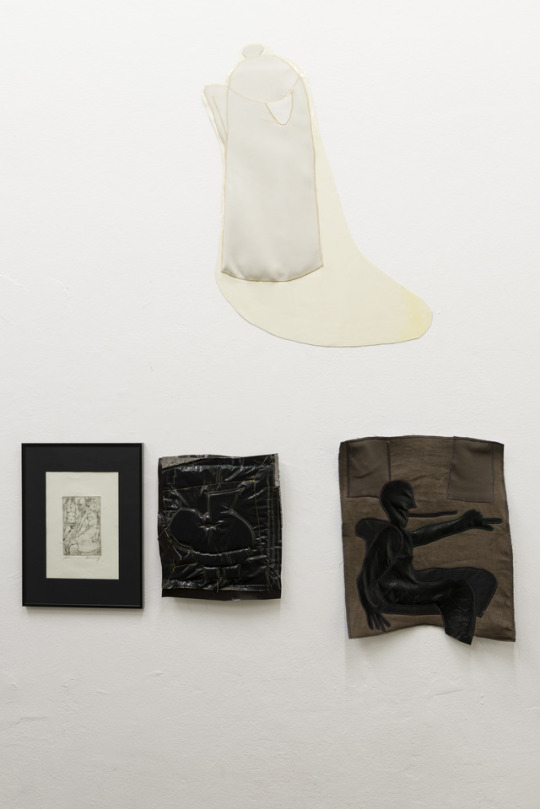
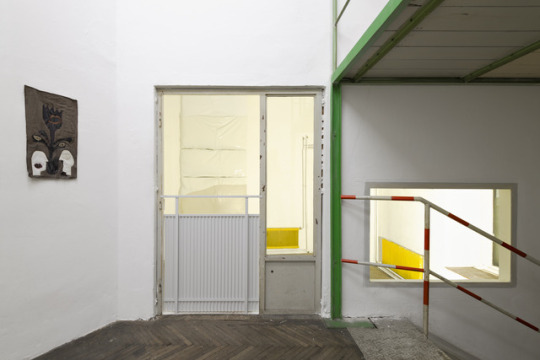
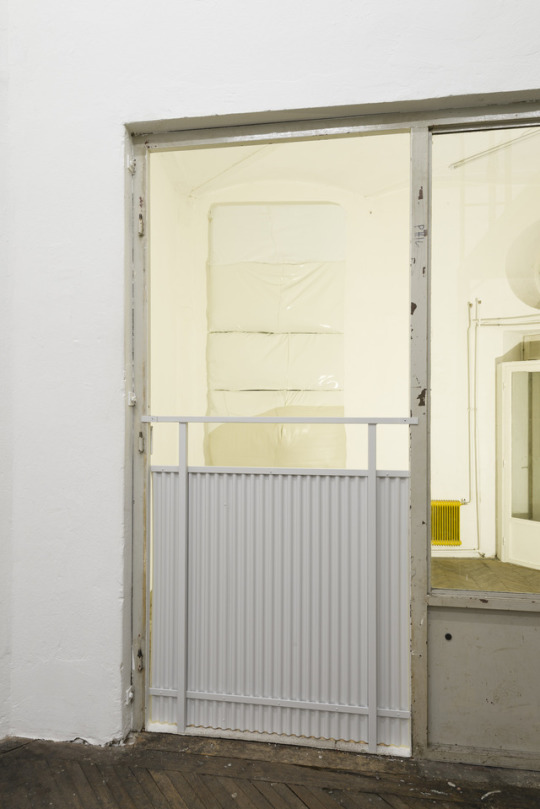
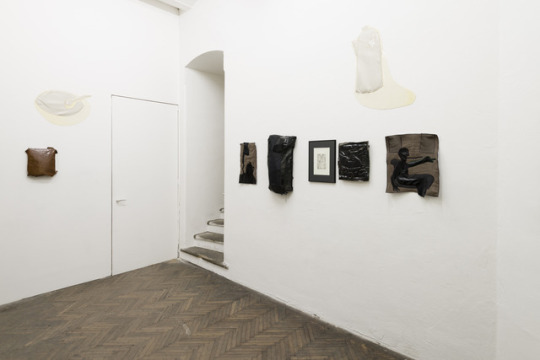
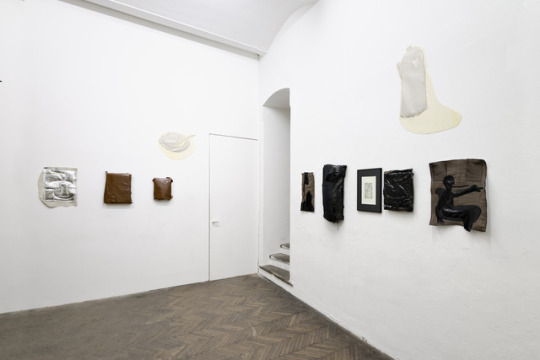
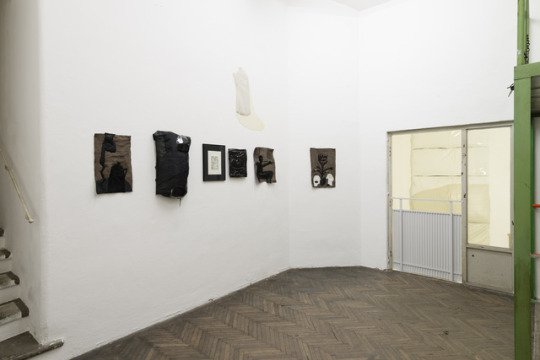
Hanau at New Jörg 10 − 24 November 2017, Wien
Karoline Dausien
The curtain goes up. This is Hanau. Hanau is a Wunderkammer. No, Hanau is a metal dollhouse. Hanau is deep woods in red light. Hanau is darkness spoken. Hanau is maternal genealogy. Holding beautiful grandmother in our hands. Holding beautiful daughter in our hands. Hanau is a river and its greenery. Hanau is a magic lantern. Hanau is a woman and her belongings. Her suitcase, her braids, her box of ginger sweets. In Hanau, we are visitors. We hold white porcelain in our hands. We hold white leather in our hands. We stand on a height looking down. From here, Hanau is a postcard. Glittering windows in morning light. Presenting to you the Papiertheater. Presenting to you the Puppenmuseum. Presenting to you the Monument. We are in Hanau. We have a camera. We always photograph the same thing: silver sugar bowl on table with red tablecloth. Silver sugar bowl in kitchen window. Silver sugar bowl dropped in backyard shrubbery. The sound of someone’s voice in Hanau. The smell of her hair. We are in Hanau during the celebration. We hold red apples in our hands. Everything is an uncanny postcard. Troubling plants and fruits, eatable things, a palm twig in snow. Figs and capers in our hands. Golden tangerines in our hands. When we close our eyes, we remember objects we‘ve touched. Red fabric falling through rain. Dark water in a cream white bathtub. We say: It pains me to record this, I am not a melodramatic person. We chew gum, we smoke cigarettes, we drink whisky. We eat bread, we eat pickles, we drink coffee. We remember these words: War is no longer declared, only continued. The outrageous has become the everyday. Thunder and crocuses. Brushing a carpet. Brushing hair. Brushing beautiful daughters‘ hair. We leave Hanau. We travel through a dead landscape. We smell poison ivy. The winter is cold, like winter in Vienna. We remember the ice rink, melting, and the hands. Rathausplatz was silent like a tomb, but glistening with soft lights. We saw children skating in circles, quietly. We wore black dresses and black gloves. We touched things and said Ooh! We knew the difference between violence and games. We said: Each and every full minute bears within it the negation of centuries of lame, broken history. Silence in audience. Red curtain down.
Text: Johanne Lykke Holm Photos: Georg Petermichel
0 notes
Photo
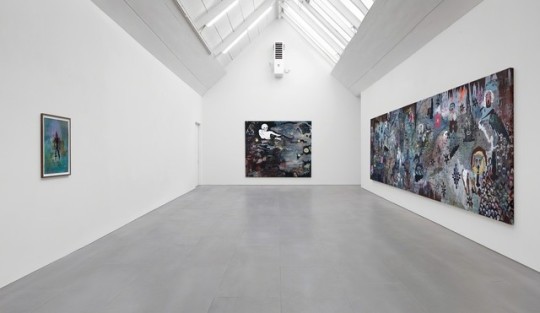
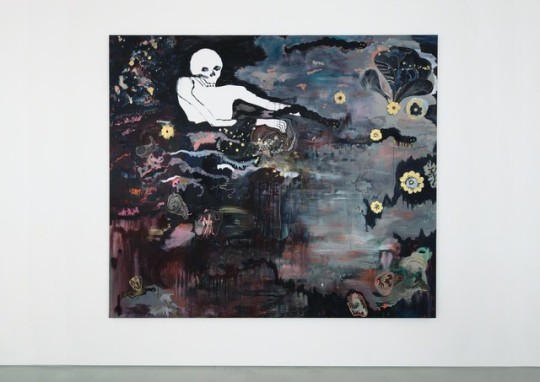
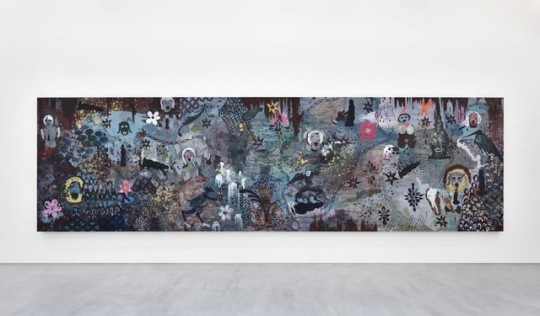
'with my voice I’m calling you', an introduction at carlier | gebauer 16 September — 16 November 2017, Berlin
Hélène Delprat
Inspired by literature such as Ovid’s Metamorphoses, cinema as in Melville’s Les Enfants Terribles and the culture of radio, Hélène Delprat’s work explores the questions of recording, memory, identity and travel. Through a daily practice which includes techniques such as painting, photography, archive, video and drawing, Delprat develops a body of work filled with self-derision. She equally humors the idea of death as a funny, monstrous, outrageous and melancholic event. Fundamentally Delprat’s works comes to function as a sort of Book of Hours, where fiction and documentary intertwine, being simultaneously dark and sensitive.
Hélène Delprat (b. 1957, Amiens, France) lives and works in Paris. She has a current solo exhibition at la maison rouge, Paris. Previous exhibitions include Musée Gustave Moreau, Paris; Jeu de Paume, Paris; the Hors Pistes Festival at Centre Georges Pompidou, Paris; Galerie C3, New York; Maison des Arts Anthonioz, Nogent-sur-Marne; Musée de Belfort, Belfort; Orangerie du Musée, Limoges; Centre d’Art, Montreuil; Institut Français and Parc de la Ciutadela, Barcelona; and Centre d’arts Contemporain, Istres.
2 notes
·
View notes
Photo
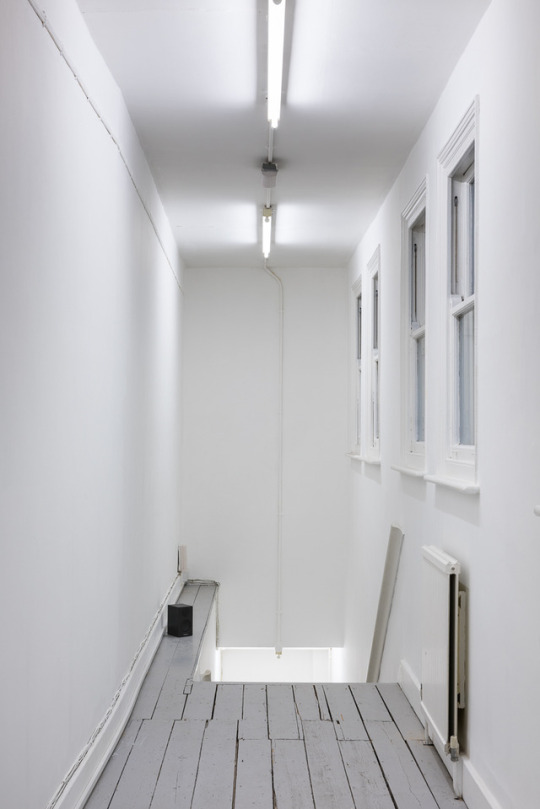
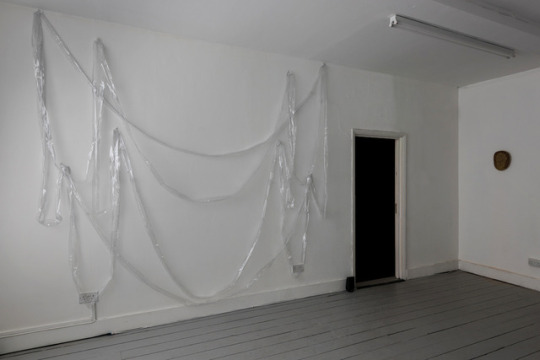
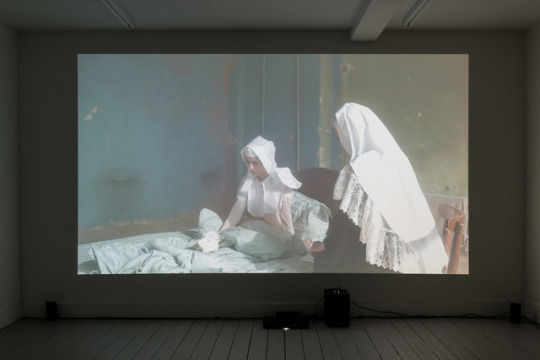
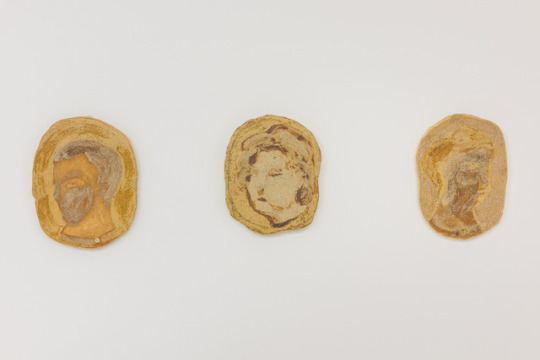
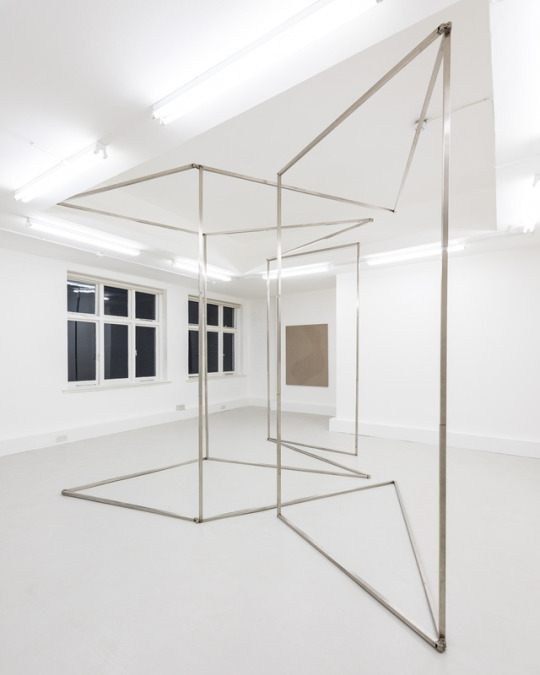

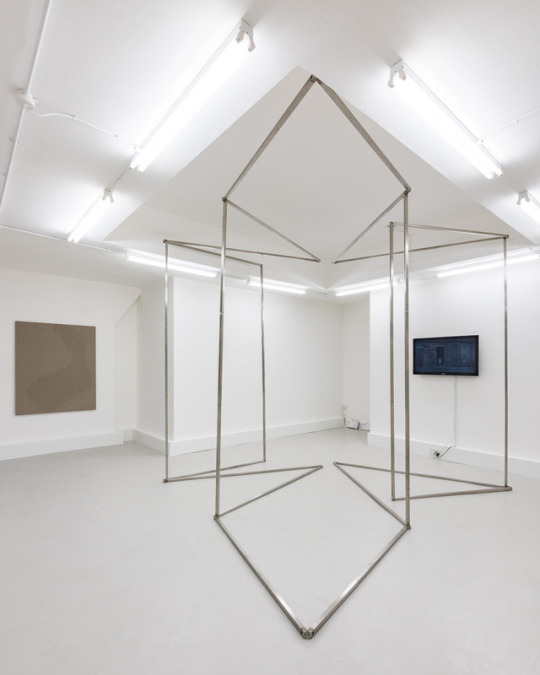
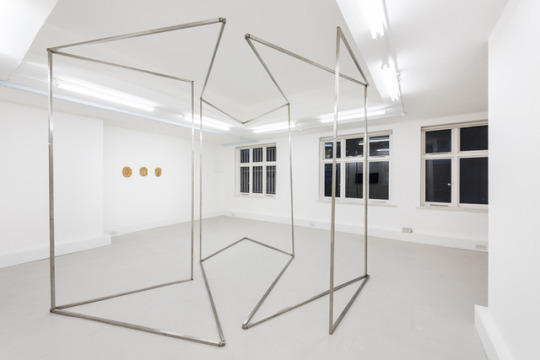
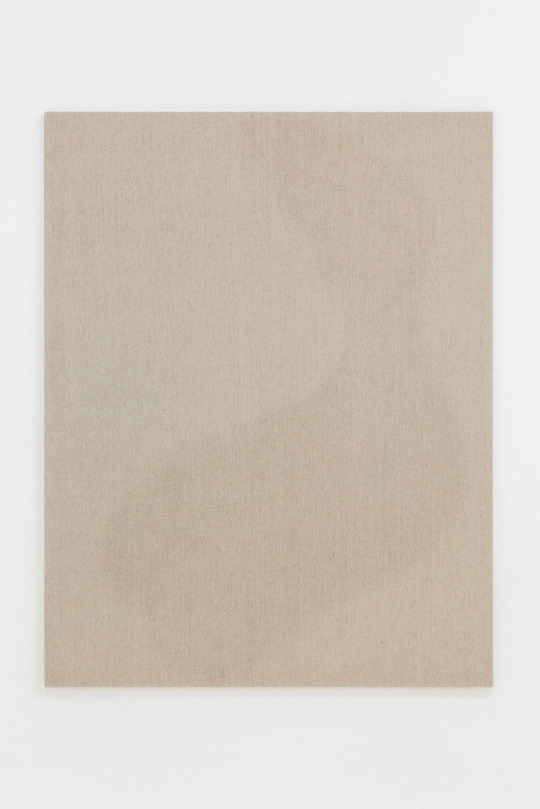
XVII. THE AGE OF NYMPHS at Mimosa House 10 November 2017 – 13 January 2018, London
Olga Grotova, Nika Neelova and Yelena Popova. With a special contribution by Mira Calix. Curated by Daria Khan.
XVII. The Age of Nymphs explores human and insect affects and the archaeology of trauma. The exhibition looks to cycles of history and the possibility of reanimating time through repetition and doubling. Confronting the stagnation of the current times, the artists test posthuman gestures and insect behaviours as a challenge to human politics.
XVII refers to the "revolution of the year seventeen" and to cicadas which live underground for 17 years before reemerging and accomplishing their life cycle shortly after. The title also relates to the current Russian governor's 17th year in power.
Nika Neelova
Nika Neelova lives and works in London. Born in Moscow, Russia, she studied at the Royal Art Academy in The Hague and graduated from the Slade School of Art with MA Sculpture. She recently participated in the Syllabus II residency at Wysing Art Centre, Cambridge and has been awarded The Royal British Society of Sculptors Award and Saatchi New Sensations Prize. Recent solo exhibitions include FAULTS / FOLDS / FALLS at Vigo Gallery London and I lean to you numb as a fossil. Tell me I’m here at Ron Mandos Gallery Amsterdam. Recent group shows include Theatre of the Absurd at Green Art Gallery, Dubai; lithic at Code Copenhagen; The Opposite of Now at Guest Projects, London and ARCHEOLOGIA E ARCHITETTURA at Fondazione 107, Turin.
Olga Grotova
Olga Grotova was born in St. Petersburg and lives and works in London. She recently graduated from the Royal College of Art with an MA in Painting after studying PGDip Fine Art at Chelsea College of Art. She uses diverse media from video to abstract painting and her work centres around the fictitiousness of historical narratives. She has exhibited at Coventry Biennial, Coventry UK; Osnova Gallery, Moscow; New Holland, St.Petersburg; Family Business Gallery, New York and Hayward Gallery and Guest Projects, both London.
Yelena Popova
Born in USSR, Yelena Popova lives and works in Nottingham, UK. Her practice questions the function of painting and how it can operate in contemporary conditions. She studied at the Moscow Art Theatre School before graduating from MA Painting at the Royal College of Art. Recent solo exhibitions include After Image at Nottingham Contemporary, Drying Time at Paradise Row, Portrait Gallery at Eastside projects, Birmingham and Olympic Throw, Invites at Zabludowicz Collection, London. She has exhibited at Osnova Gallery, Moscow; Future Light, Vienna Biennale; Saatchi Gallery and Royal Academy, London.
Mira Calix
Mira Calix is an award winning artist, composer and performer based in the United Kingdom. Music and sound have always been at the centre of her practice, which she continues to integrate with visual media and technological innovation to create multi-disciplinary installations and performance works. Mira has been commissioned by many leading international cultural institutions, festivals and ensembles including the London Sinfonietta, the Royal Shakespeare Company, the Aldeburgh Festival, the Melbourne Recital Centre, Performa, Institute of Contemporary Art, Garage MCA, National Portrait Gallery, the Manchester International Festival and The Mayor Of London among others. Her mixed media installation by beings in 2 places at once was recently shown at the Coventry Biennial.
1 note
·
View note
Photo
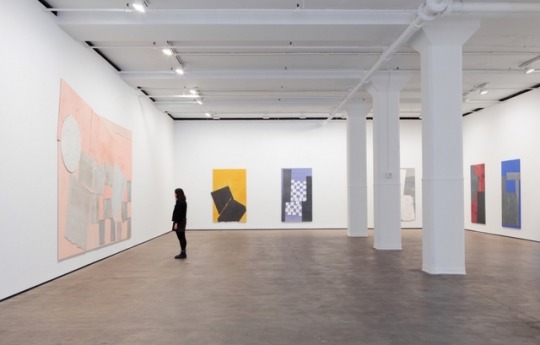
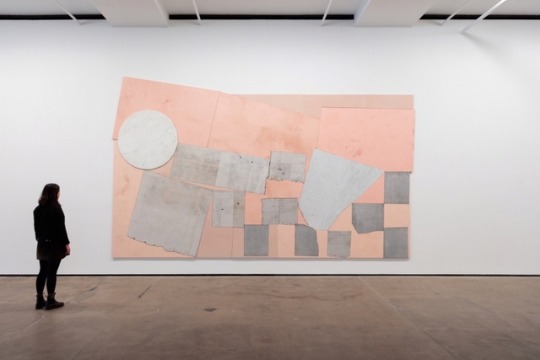
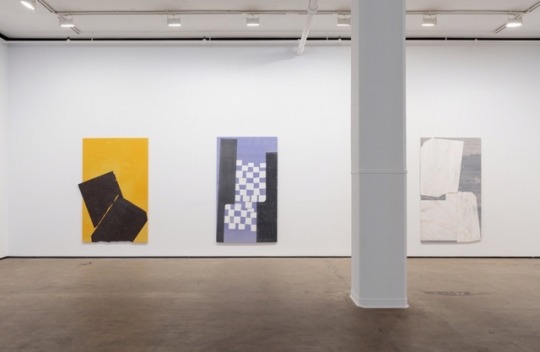

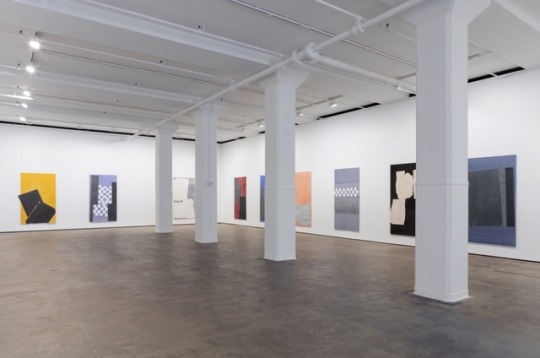
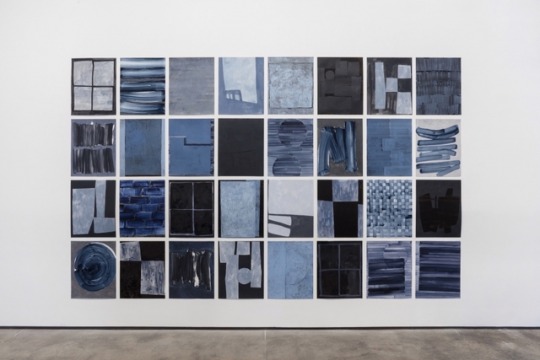
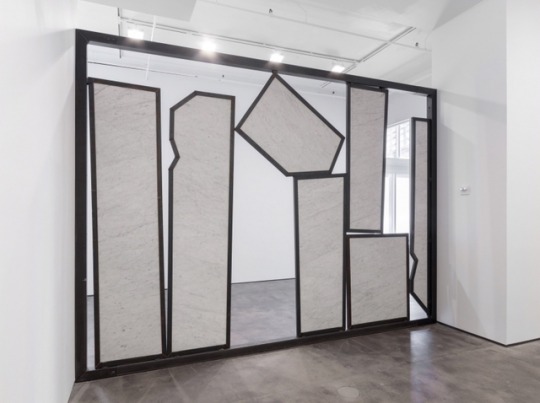
WIDE WAKE at Sean Kelly 27 October — 16 December 2017, New York
Sam Moyer
Sean Kelly is pleased to present WIDE WAKE, an exhibition of impressive new work by Sam Moyer. Recognized for a diverse practice that draws inspiration from architectural space and natural materials, Moyer fashions compelling hybrids that abstract the languages of painting and sculpture. This will be Moyer’s first exhibition with Sean Kelly and her first solo exhibition in New York since 2014. An opening reception will take place on Thursday, October 26, from 6-8 pm. The artist will be present.
For this exhibition, Moyer has produced a series of vibrant, large-scale paintings, a dramatic, architectural sculpture, and drawings in oil on paper. Each of Moyer’s large paintings is a unique composition of variegated and multi-hued sections of repurposed marble, slate and stone combined with fabrics in a spectrum of colors. Although Moyer has used dyed textiles and industrial fabrics in previous bodies of work, this is the first time she has hand-painted the canvas. A dominant centerpiece of the exhibition is a monumental painting measuring eighteen feet in length, comprised of dozens of individual elements. Compositionally related to nine other paintings on view in the main gallery, it is among the most ambitious works Moyer has ever produced. In the front gallery, Moyer will present a major architectural installation composed of immense sheets of stone carefully hinged and arranged to create a portal or gateway, which bisects the space. The monumentality of this sculpture serves as perfect contrast to what lays beyond: a compositional grid of 32 intimately scaled drawings.
Each of the drawings is executed in the same materials and embrace a similar tonal range. The variety of forms and gestures incorporated reveals Moyer's abiding interest in her artistic forebears ranging from David Smith to Robert Smithson, Agnes Martin to Eva Hesse. Indeed, the title of the exhibition, WIDE WAKE, is an acknowledgement of the inspiration Moyer has taken from these and other artists. She adopts the phrase wide wake to acknowledge “the breadth of that influence,” likening its affect to following in the wake of a boat on the water. She continues, “I think of this body of work as very personal and internal, while making direct reference to those that came before me, the artists and artworks that have imprinted themselves on my mind, and their ghosts that I have incorporated into my practice.” While acknowledging such inspiration, Moyer’s new paintings, sculpture and drawings reveal a powerful aesthetic and refreshing assurance. Evincing beauty, humor, and a careful equivalence of the readymade and handmade, WIDE WAKE brings together disparate aspects of Sam Moyer’s practice.
Sam Moyer’s works are included in prominent collections including Whitney Museum of American Art, New York; Yale University Art Gallery, New Haven, CT; Louis Vuitton Foundation, Paris, France; and The Aïshti Foundation, Beirut, Lebanon, amongst others. Her work has been exhibited at The Drawing Center (New York, NY), The Bass Museum (Miami, FL), University of Albany Art Museum (Albany, NY), The Public Art Fund (New York, NY), White Flag Projects and The Contemporary Art Museum St. Louis (St. Louis, MO), LAND (Los Angeles, CA), Tensta konsthall (Stockholm, SW), Cleopatra’s Greenpoint (Brooklyn, NY), and Société (Berlin, DE). She has also participated in "Greater New York" and “Between Spaces” at PS1 Contemporary Art Center, Queens. Moyer received her BFA from the Corcoran College of Art and Design and her MFA from Yale. She lives and works in Brooklyn.
Photography: JSP Art Photography Courtesy: Sean Kelly, New York
1 note
·
View note
Photo
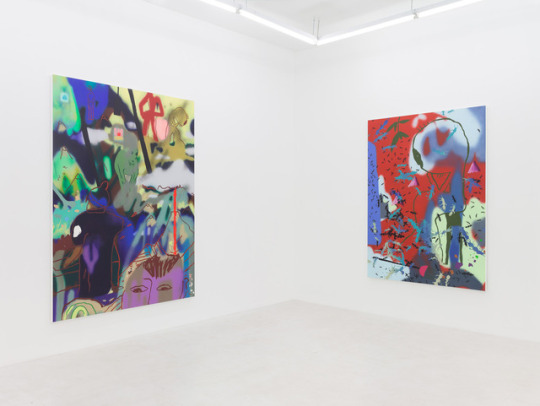
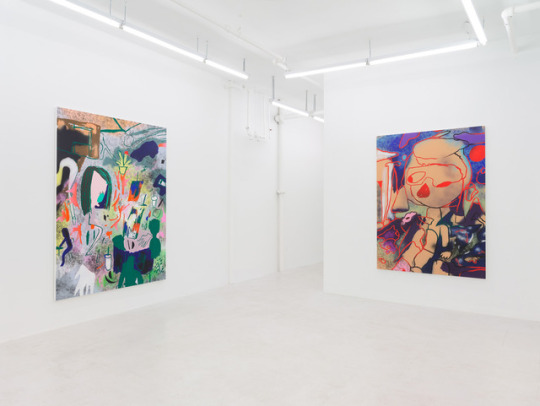
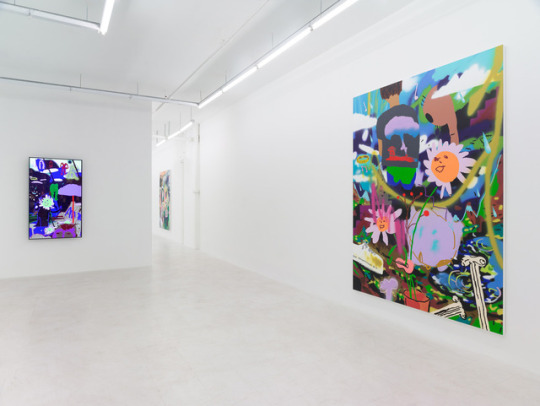
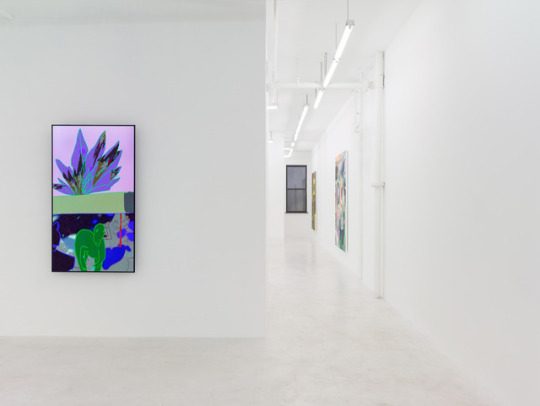

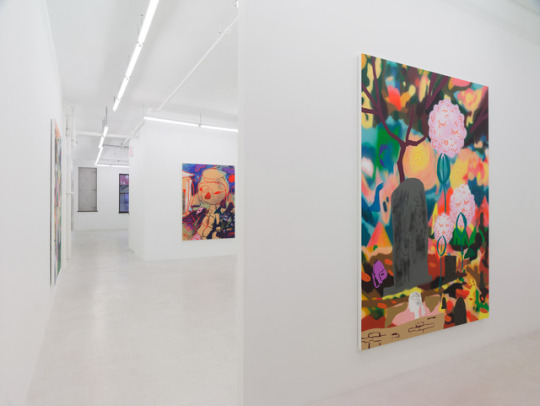
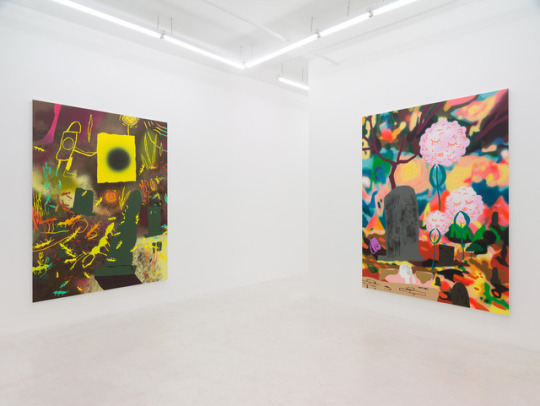
Forest Lawn at Downs & Ross 03 November — 17 December 2017, New York
Joshua Nathanson
The last beam of sun softly cuddles the skin. Children’s groans can be heard dissolving in the rocky ochre landscape as the strong yet gracile fever that stems from the first glass of absinthe rings the end of the day and the beginning of the long-awaited aperitif. This Provençal scene taken from the patio of a Mas overlooking the Aubagne lowland could have been the daily rituel of Joshua Nathanson. A Marcel Pagnol ecstasy that has haunted an incalculable amount of T Magazine readers. Yet, Nathanson has not grown desperately seeking the maternal shadow of a cedar tree. He has instead been shrouded by Los Angeles’ purified and controlled air conditioning system that connects all of the metropolis’ interior – Frank Gehry’s poorly renovated mall in Santa Monica to the diffuse atmosphere of the Los Angeles Athletic Club. Nathanson’s paintings depict Californian scènes de vie that are captured on site via pencil drawings, routed through his iPad’s drawing apps, and become the basis for paintings accrued of both computed and caressed gestures. While technically bearing allegiance to the assimilative method of the light-based realm started in the late 50’s with Gerhard Richter and prolonged by Albert Oehlen, his research sidesteps the materialist critiques of contemporary image-making. Instead, his plein-air digital renderings reflect life at some closeness to the screen. At this range, the internet savvy concept of attention deficit disorder becomes all the more apparent. If Nathanson shares the Impressionists’ ambitions to translate contemporary modes of perception, he is less concerned with light, and its reflections on the variegated textures of modern life, than with showing a conflation between the city’s early-20th-century pastoral dream and an Oldenburgian distended optimism. Forgotten is the time when the Californian pavilion for the World Exhibition in 1893 was a massive bell composed of fresh citrus; yet, even then, nature was treated as a brand. In a city which has obliterated the concept of public spaces, Nathanson wanders between Vito Acconci’s Mobius Bench II in Pasadena and the Borghesian Forest Lawn Memorial Park. Housing a complete collection of replicas of Michelangelo’s sculptures, the park sits dangerously close to the Warner Bros. Studios. Only now it is possible to picture Nathanson walking through The Grove like Walter Benjamin did in the arcades of Paris, a post-situ explorer capturing Hollister tee-shirt buyers, synthetic pink ice-cream consumers, agitated conversations at the Cheesecake Factory, and kids in Lisa Frank under palm trees. Like Rousseau in Ermenonville, he is the promeneur of Huntington Park. A dreamer who has integrated the beauty of impermanence and the variation of flux into his contemplations. An acute observer who mobilizes different registers of perceptions, seizing the picturesque, appropriating the poetry of the place, feeling its romantic emanation. No great divide – forget Frankfurt school and French post-structuralism. The flâneur in Los Angeles collects expensive Uber bills and has a desperately high carbon foot print. Here, if there is a kind of pastoralism cherished by Le Lorrain or Poussin it has been screened out with the degraded image produced in Paint. The spectacle of seasons is dissected with a loose, balletic hand. Chronicler of the transitory, amateur of enchanted nights, or simply a Baudelairian chatbot in the city of Quartz. – Pierre Alexandre Mateos & Charles Teyssou
Joshua Nathanson (b. 1976, Washington, D.C., lives and works in Los Angeles, CA) received his BFA from the School of Visual Arts, New York, NY, and his MFA from Art Center College of Design, Pasadena, CA. Recent group exhibitions include: The Museum of Contemporary Art Chicago; Whitechapel Gallery, London: the Yokohama Museum; ARNDT, Singapore; and 356 S. Mission, Los Angeles. Solo exhibitions include: Various Small Fires, Los Angeles; Luce Gallery, Turin; and Kaikai Kiki Gallery, Tokyo. His work is the subject of an upcoming solo exhibition at Yuz Museum, Shanghai, in 2018, and is included in the permanent collections of the Los Angeles County Museum of Art and the Museum of Contemporary Art Chicago.
1 note
·
View note